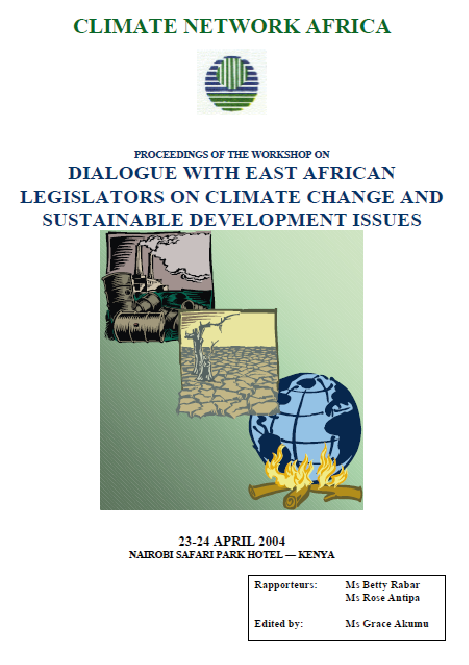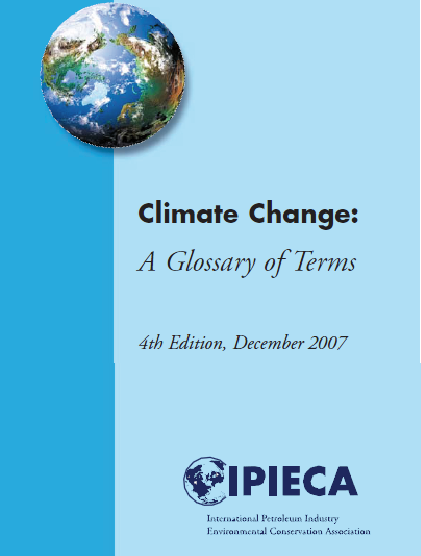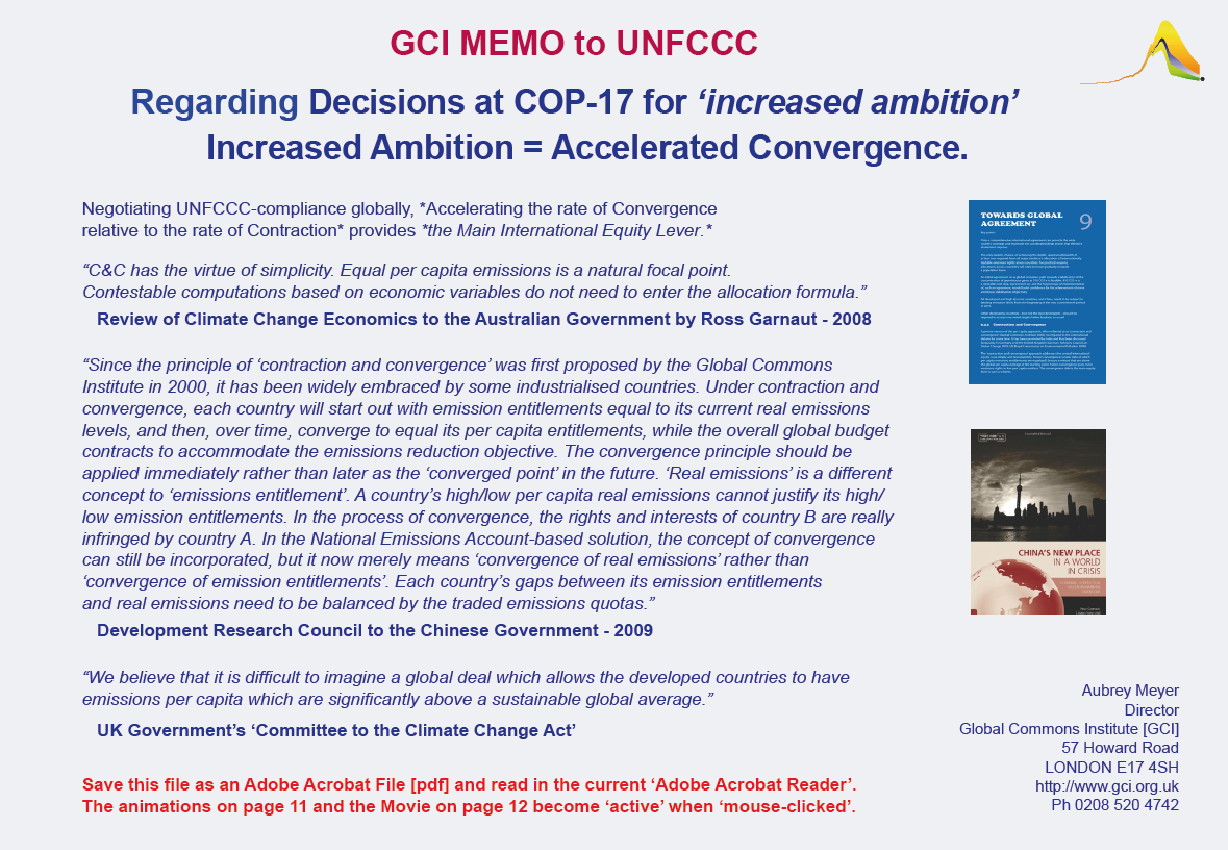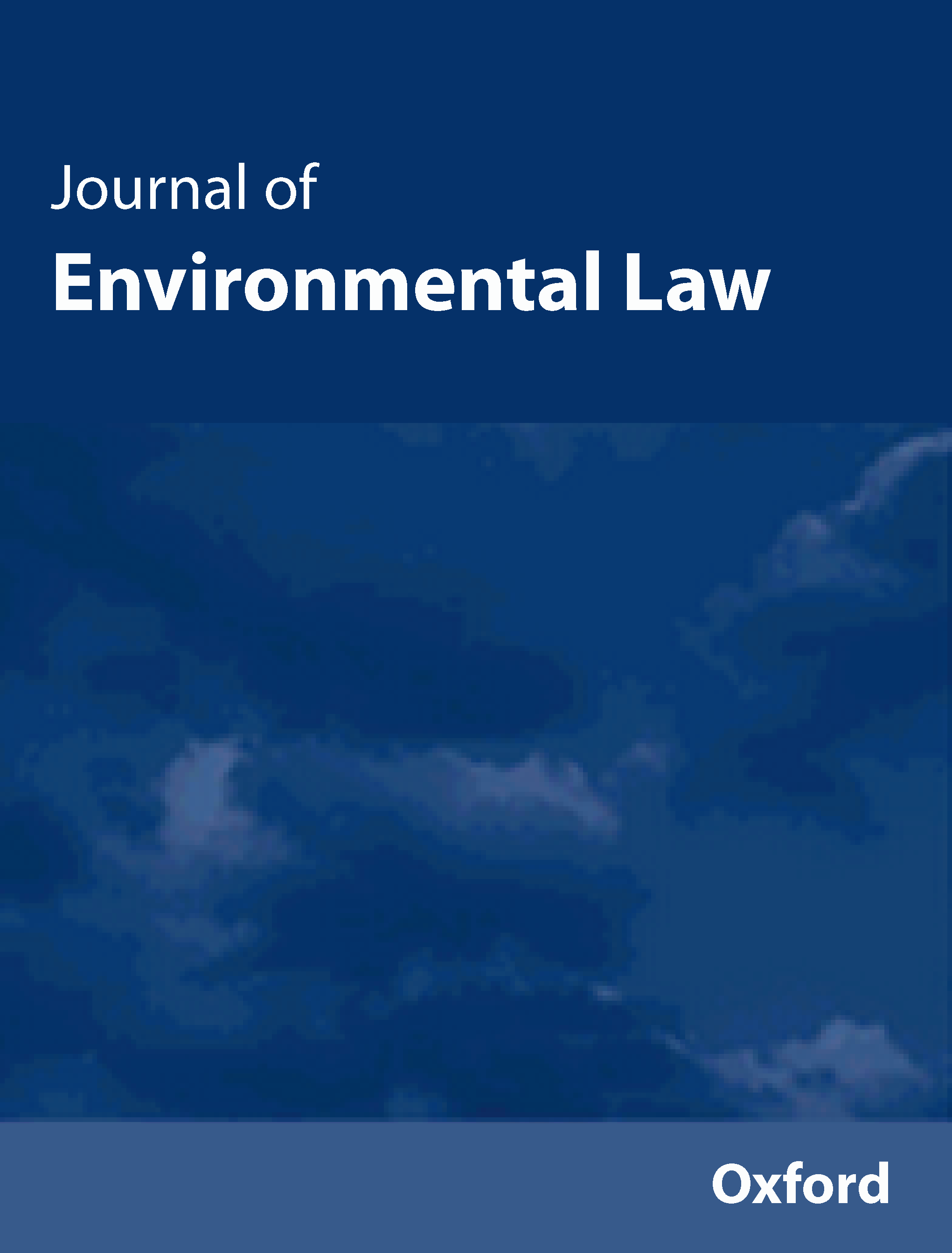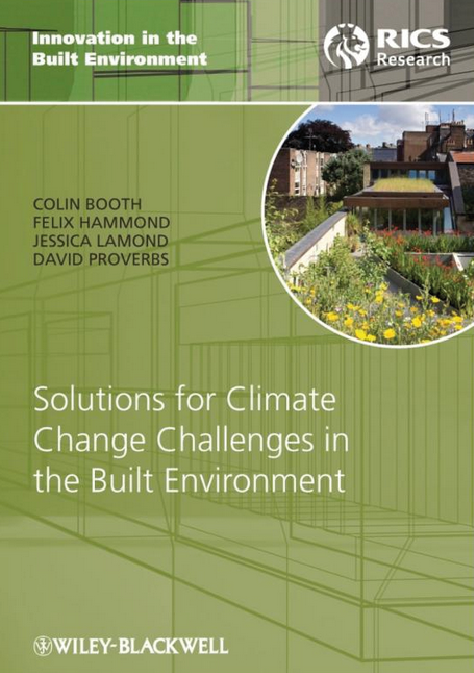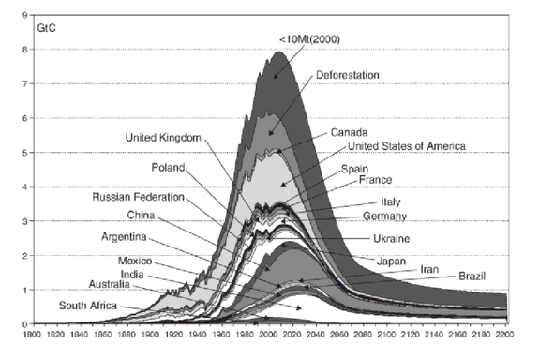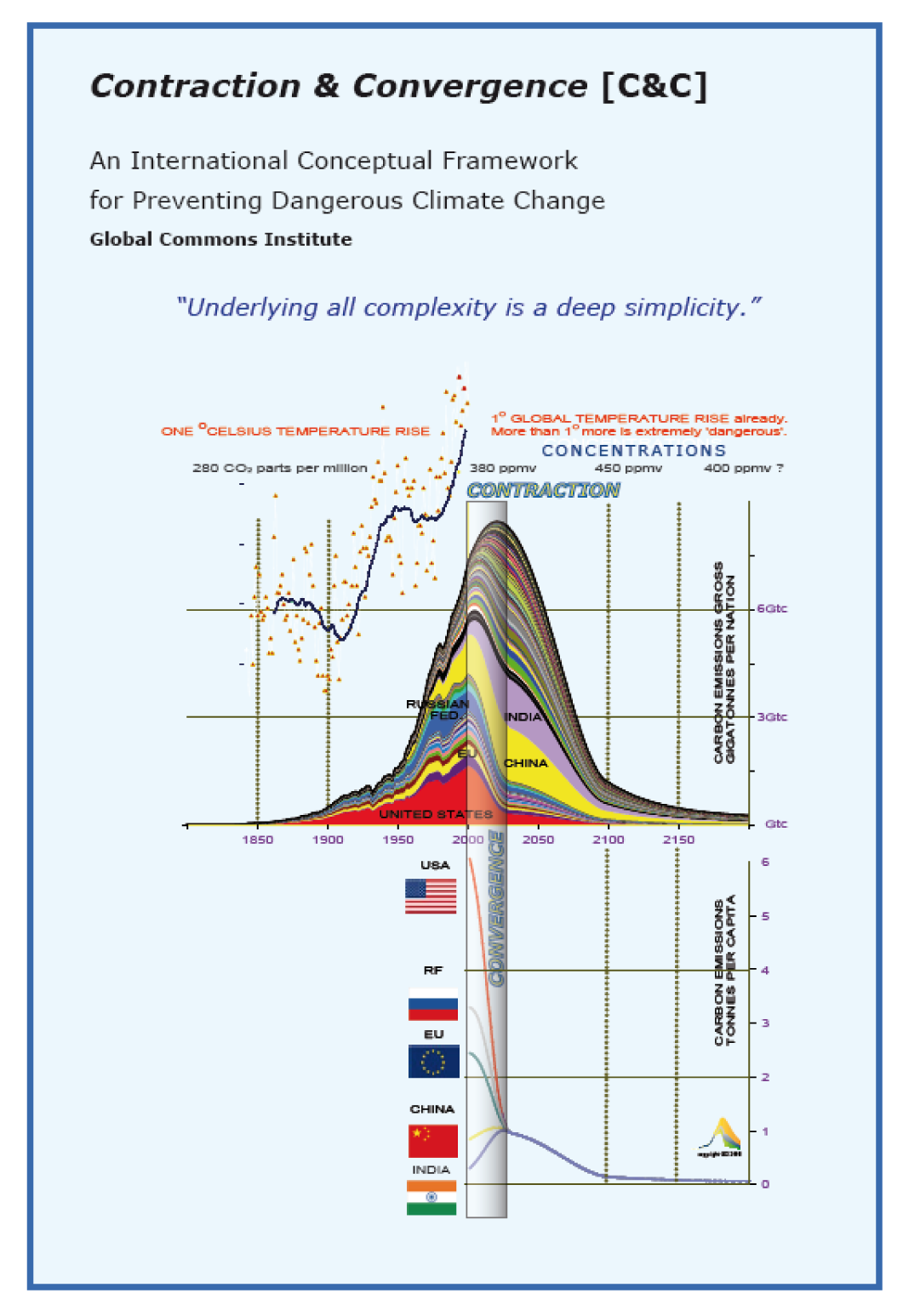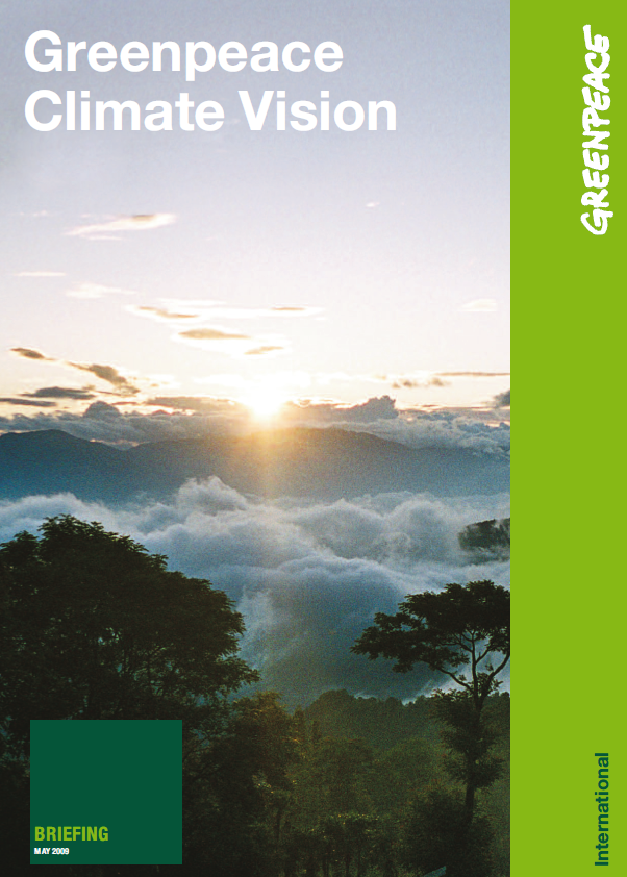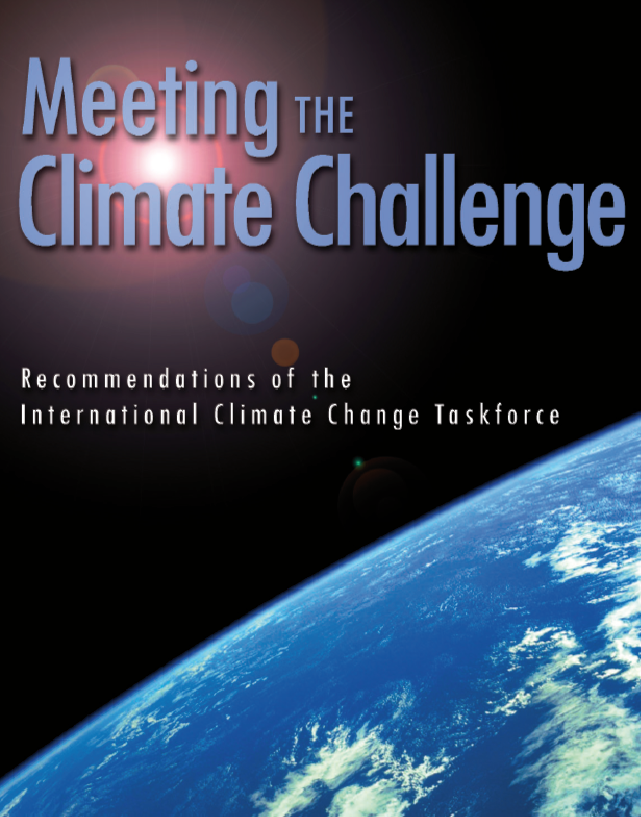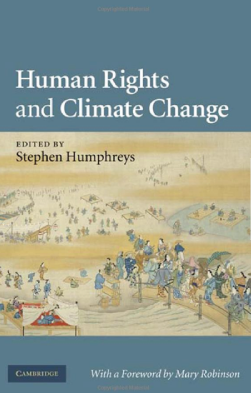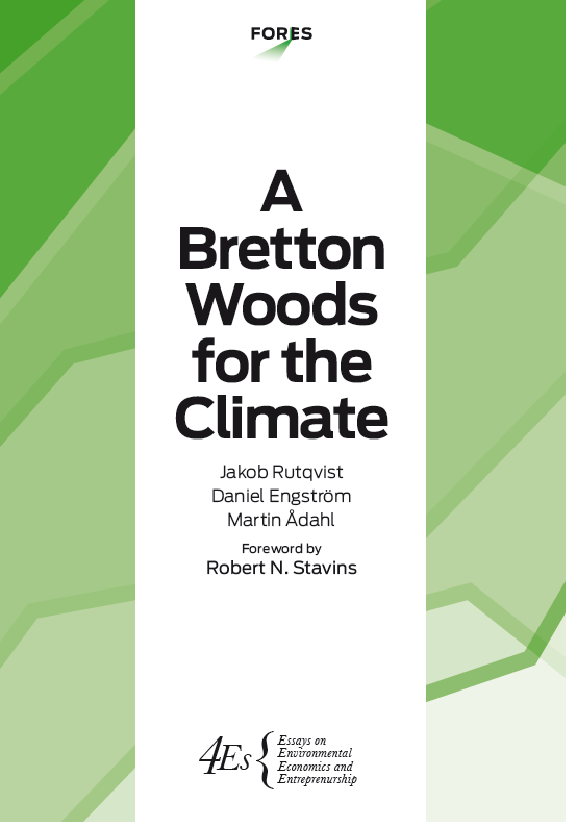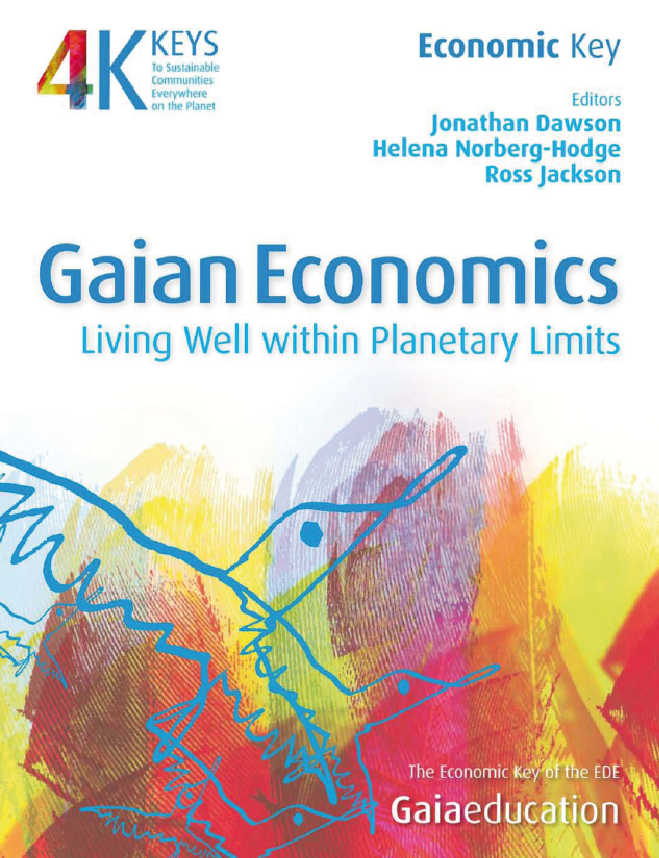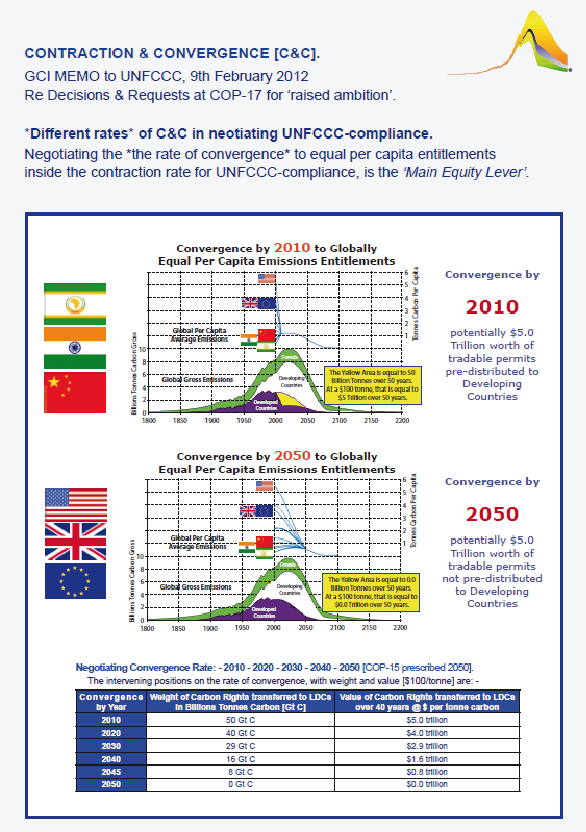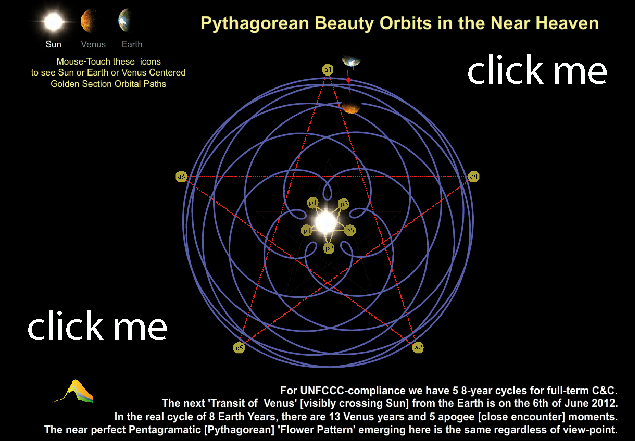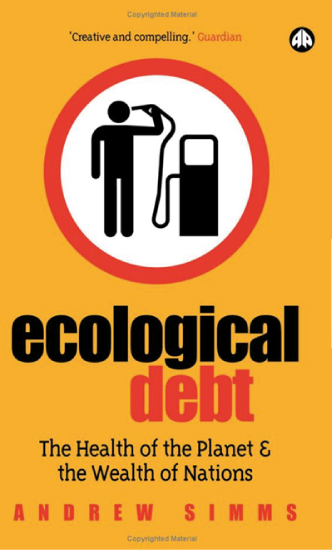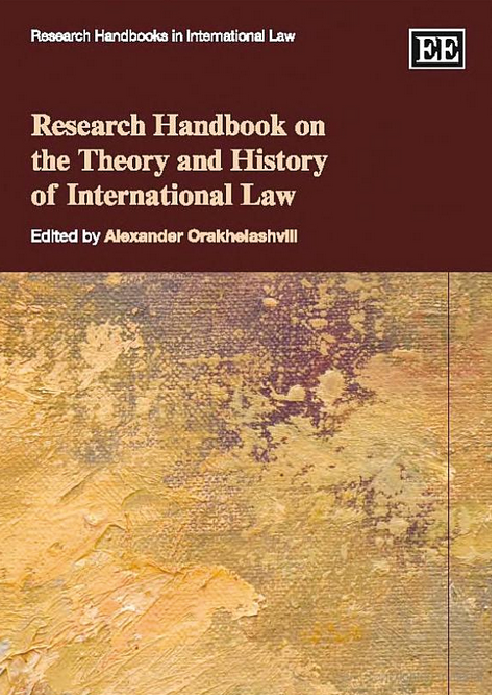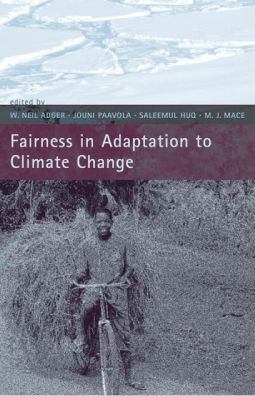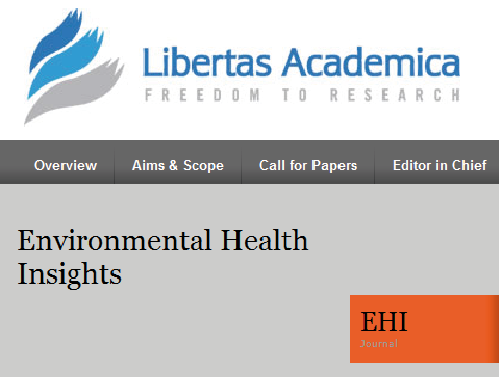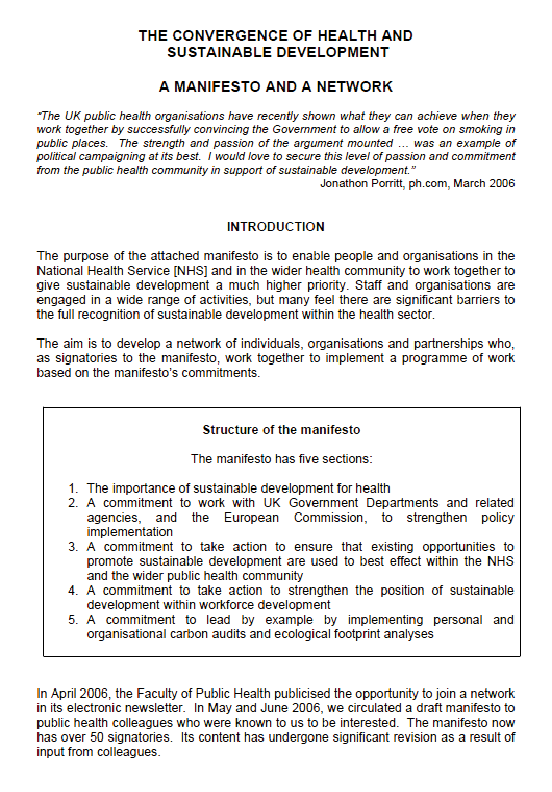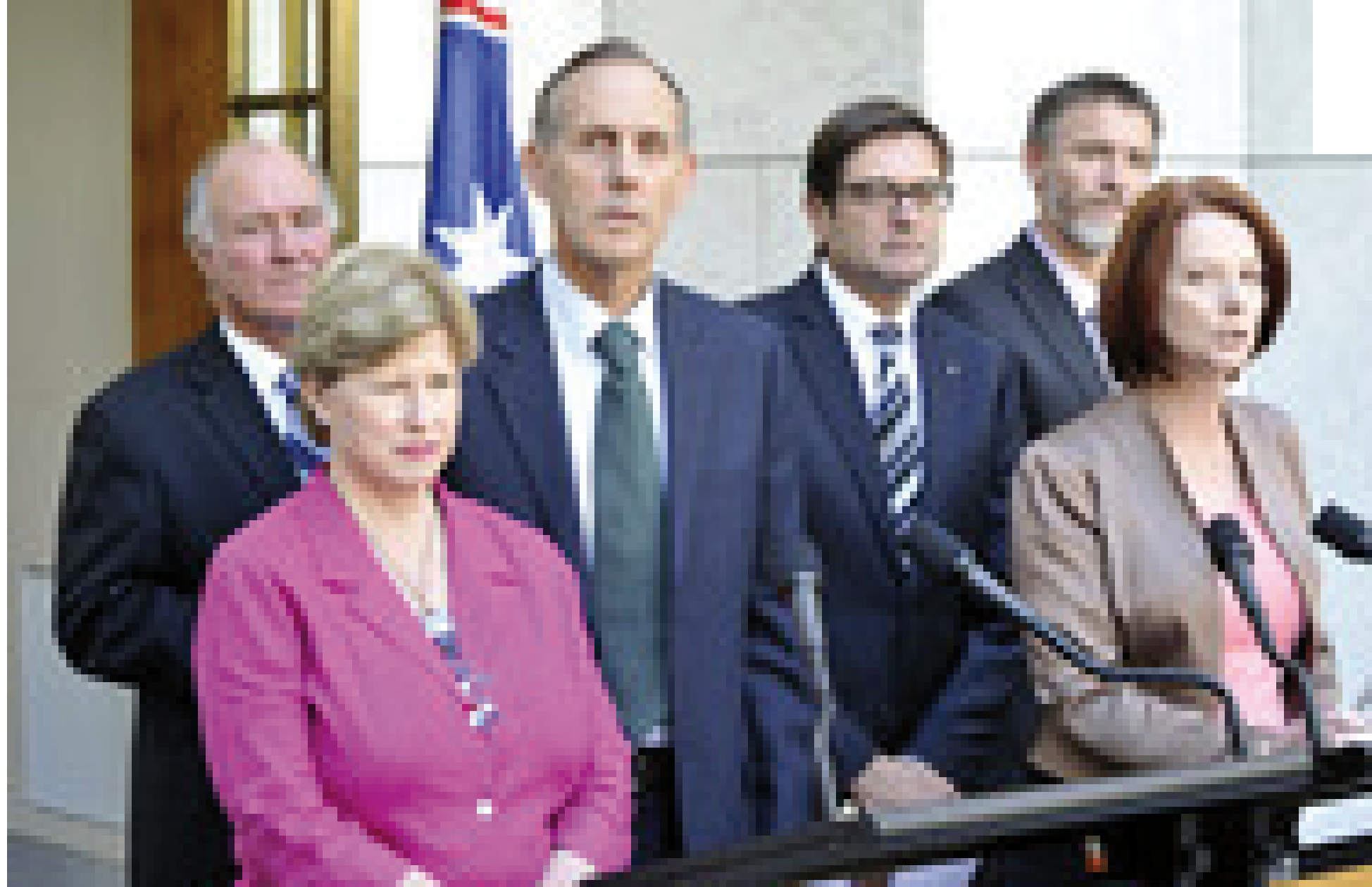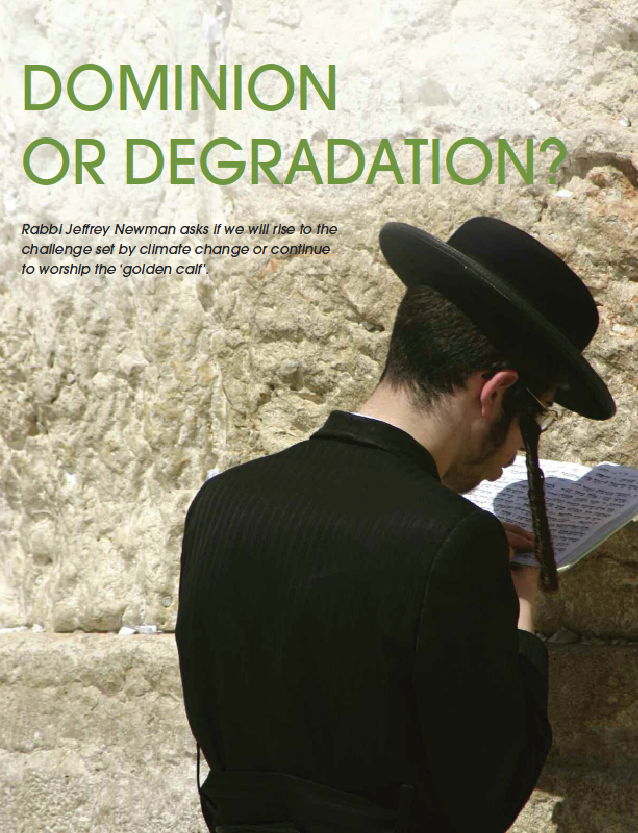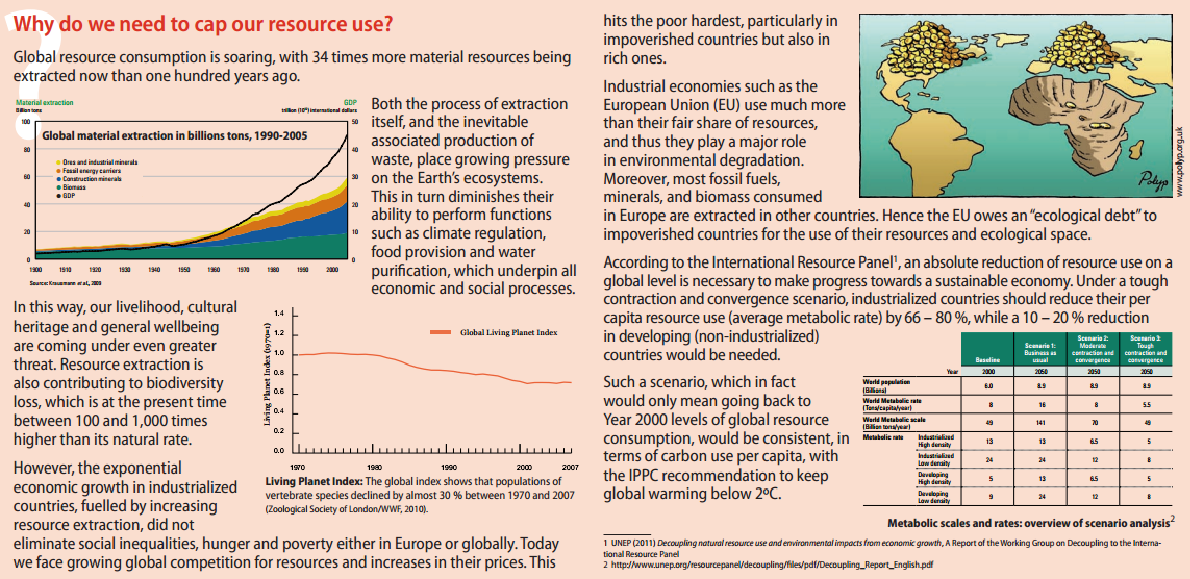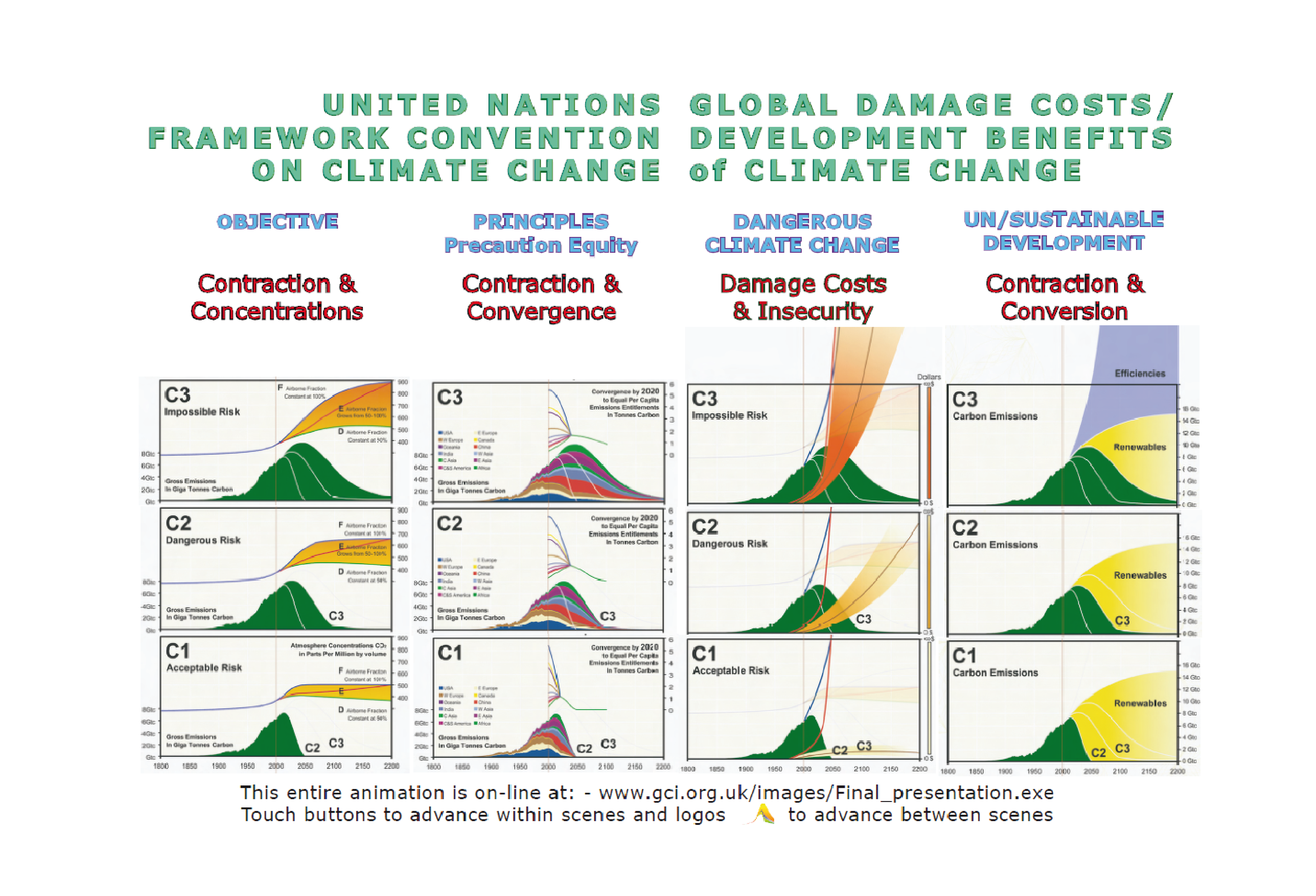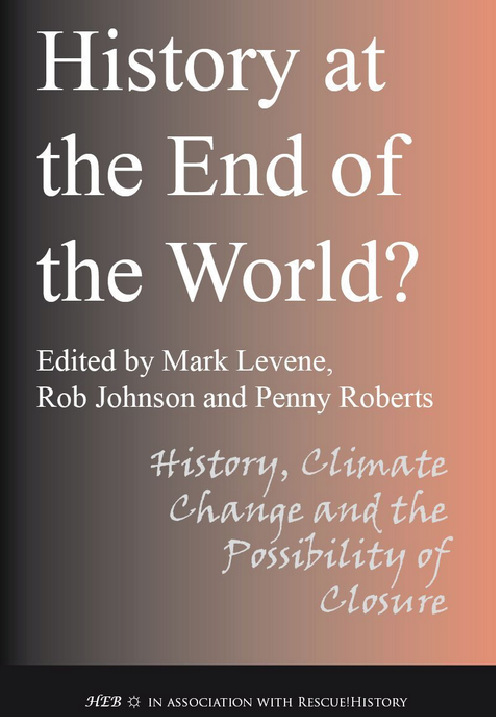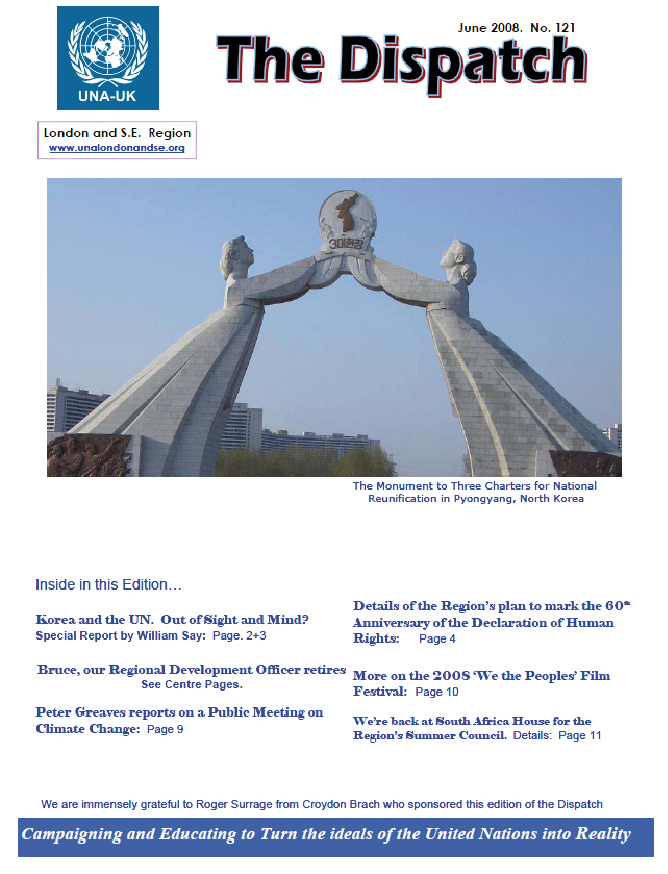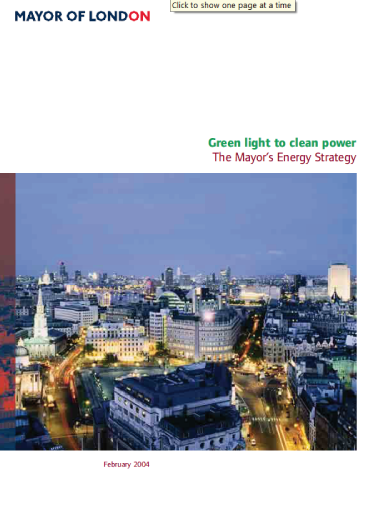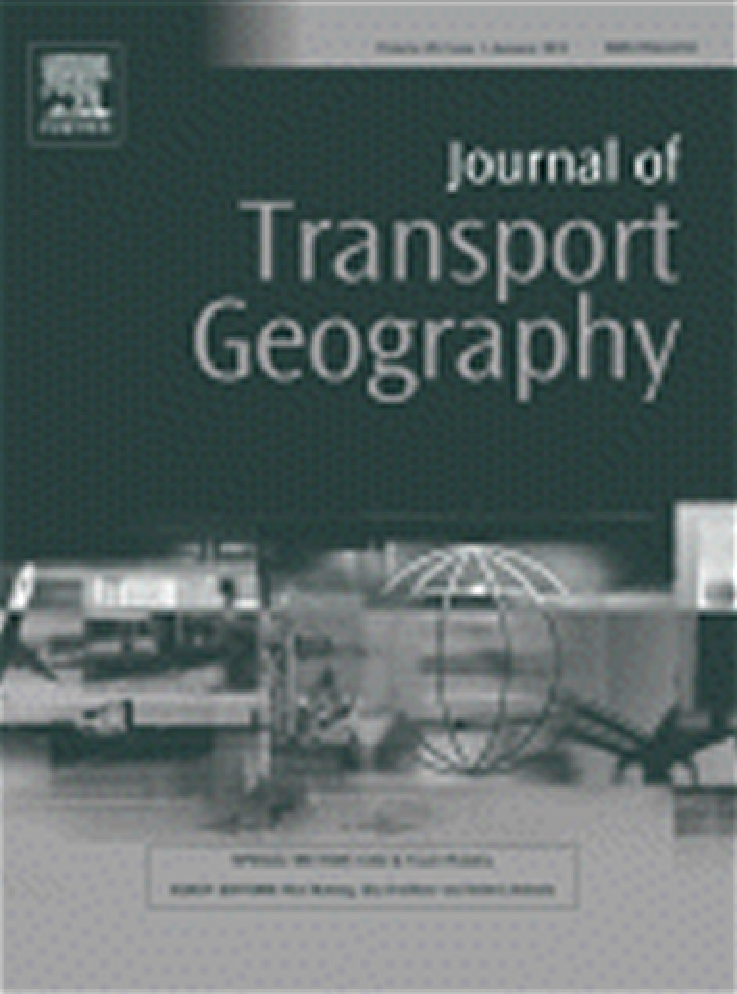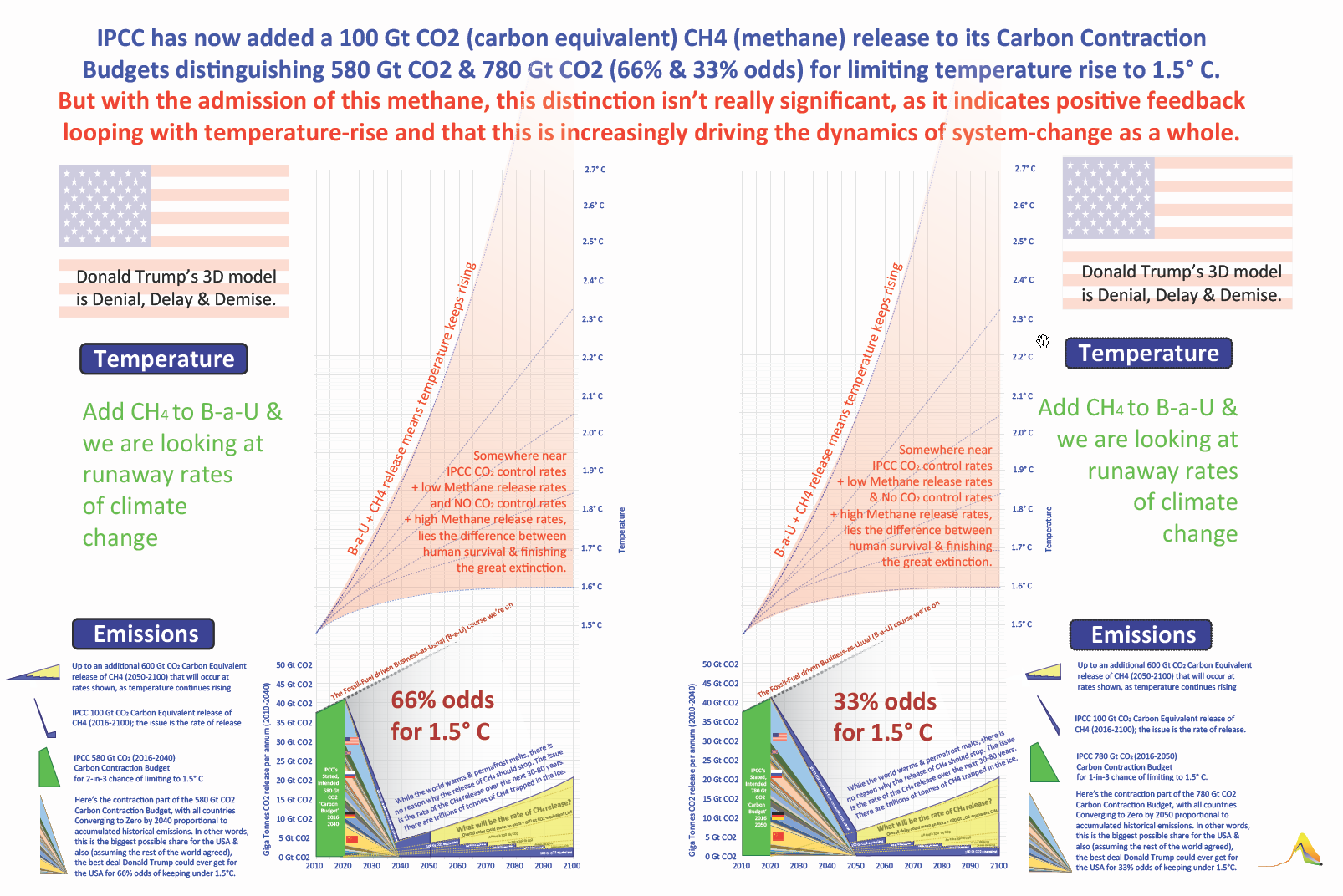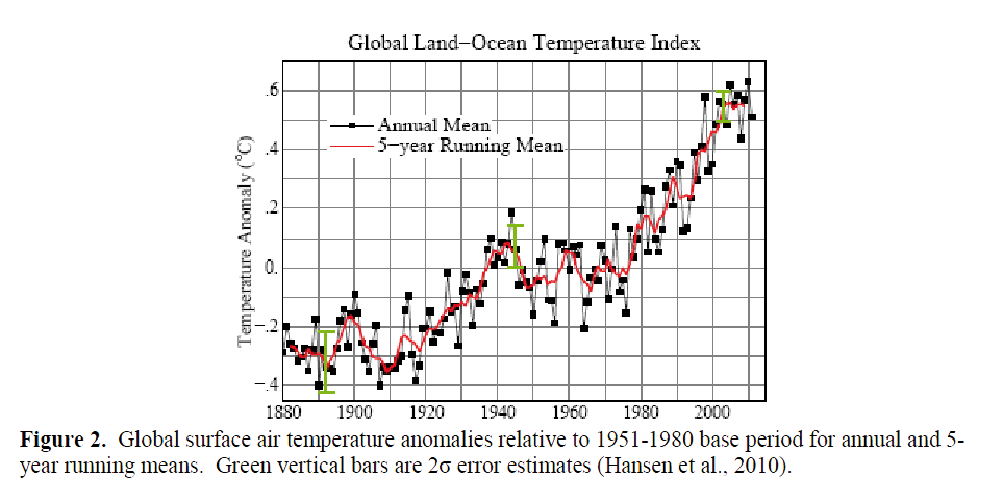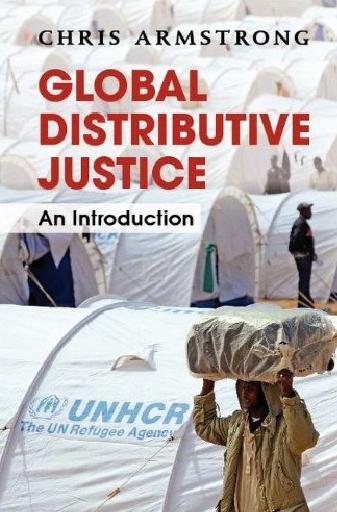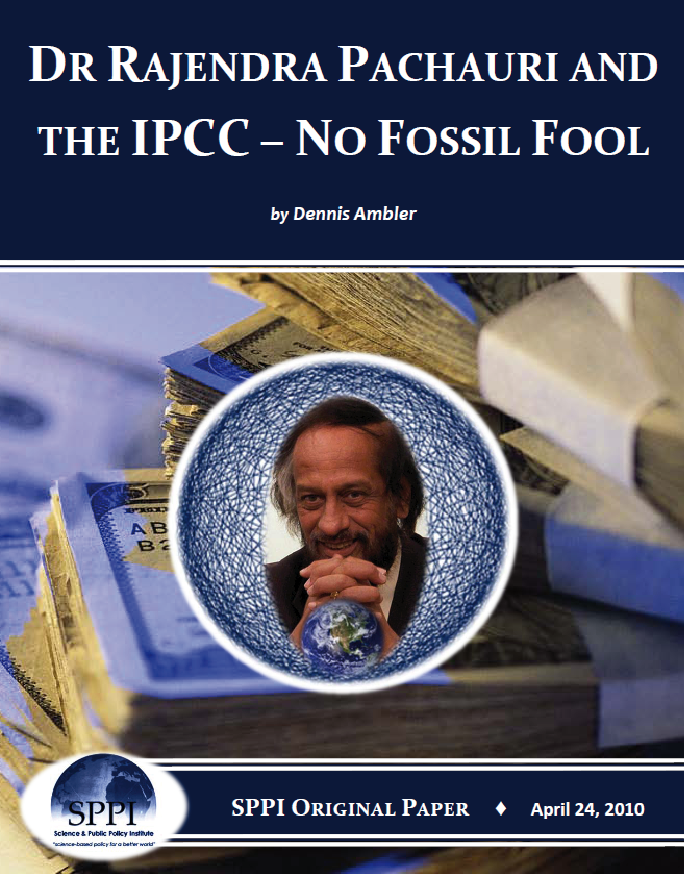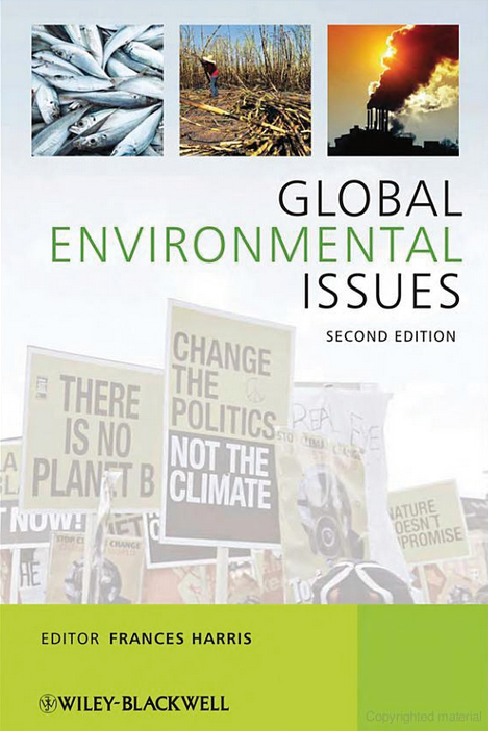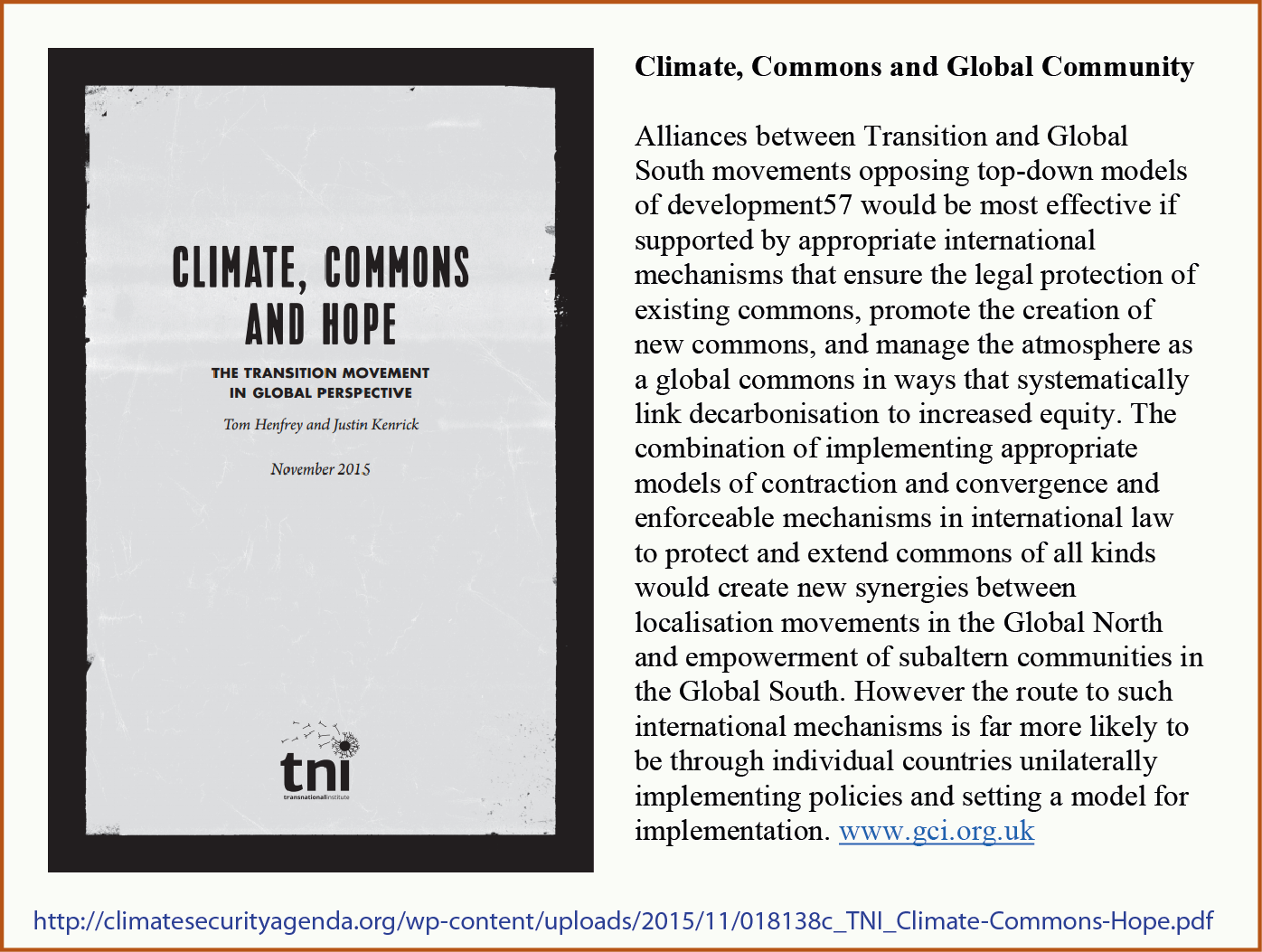The workshop sought to galvanize urgent international support and action for the concept of Contraction and Convergence policy framework proposed to the United Nations Convention on Climate Change by the Global Commons Institute (GCI) since 1990. The African Group of Nations had proposed during the UNFCCC – COP 3 that a “globally agreed ceiling of GHG emissions can only be achieved by adopting the principle of per capita emissions rights that fully take into account the reality of population growth and the principle of differentiation”. The way forward for East African legislators was envisaged as calling for the UNFCCC secretariat to study, evaluate and assess the concept of Contraction and Convergence, and at the same time set the stage for building a global community to support the concept as it added value to the Kyoto Protocol and also encompassed the major principles in the Climate Change Convention such as the Precautionary principle, Polluter Pay principle and the Equity principle.
PROCEEDINGS OF THE WORKSHOP ON DIALOGUE WITH EAST AFRICAN LEGISLATORS
ON CLIMATE CHANGE AND SUSTAINABLE DEVELOPMENT ISSUES
29 February 2012 - IPIECA "C&C - Equitable and Global involving all countries."
Contraction and Convergence
Some have promoted the idea of ‘contraction and convergence’ as a long-term strategy for managing global GHG emissions. Contraction refers to a declining global cap which would be set on worldwide emissions, together with a reduction trajectory over many decades. Typically, emissions entitlements would be allocated to nations by a formula that would converge over time towards equal per capita emission rights. Proponents of the system of contraction and convergence argue that it is equitable (being based on population) and that it would be truly global, involving the participation of all countries.
International Petroleum Industry Environmental Conservation Association
IPIECA Climate Change: a Glossary of Terms29 February 2012 - "Rate of Convergence main equity lever." GCI Memo to UNFCCC Final
Regarding Decisions at COP-17 for ‘increased ambition’ equals 'accelerated convergence'. Negotiating UNFCCC-compliance globally, *Accelerating the rate of Convergence relative to the rate of Contraction* provides *the Main International Equity Lever.* “C&C has the virtue of simplicity. Equal per capita emissions is a natural focal point. Contestable computations based on economic variables do not need to enter the allocation formula.”
Review of Climate Change Economics to the Australian Government by Ross Garnaut - 2008
“Since the principle of ‘contraction and convergence’ was first proposed by the Global Commons Institute in 2000, it has been widely embraced by some industrialised countries. Under contraction and convergence, each country will start out with emission entitlements equal to its current real emissions levels, and then, over time, converge to equal its per capita entitlements, while the overall global budget contracts to accommodate the emissions reduction objective. The convergence principle should be applied immediately rather than later as the ‘converged point’ in the future. ‘Real emissions’ is a different concept to ‘emissions entitlement’. A country’s high/low per capita real emissions cannot justify its high/low emission entitlements. In the process of convergence, the rights and interests of country B are really infringed by country A. In the National Emissions Account-based solution, the concept of convergence can still be incorporated, but it now merely means ‘convergence of real emissions’ rather than ‘convergence of emission entitlements’. Each country’s gaps between its emission entitlements and real emissions need to be balanced by the traded emissions quotas.”
Development Research Council to the Chinese Government - 2009
“We believe that it is difficult to imagine a global deal which allows the developed countries to have emissions per capita which are significantly above a sustainable global average.”
UK Government’s ‘Committee to the Climate Change Act’
GCI MEMO to UNFCCC29 February 2012 - Journal of Envrionmental Law "C&C Equity-based right-to-development."
The discussions in the climate negotiations, and on the sidelines of it, on the right to an ‘equitable sharing of atmospheric space’, survival and luxury emissions, the contraction and convergence proposal all draw on the equity-based right to development. Global Commons Institute, ‘Contraction and Convergence: A Global Solution for a Global Problem’.
The Increasing Currency and Relevance of Rights-Based Perspectives in the International Negotiations on Climate Change
Lavanya Rajamani Journal of Environmental Law28 February 2012 - "C&C seen by many as only way with a reasonable chance of getting worldwide support." RICS
If we are to mitigate the effects of climate change, we need a rapid reduction in our prodution of greenhouse gases. Through the IPCC, attempts are being made to do this (e,g. Copenhagcn 2009 and Kyoto 1997). Unfortunately, such reductions only include the developed world and the targets set have been small compared to what the climate science indicates is needed.
Figure 23.1 shows the scale of the problem with most developed countries needing to cut their emissions by 80% or more. Figure 23 .1 was created under the assumptions of Contraction and Convergence. This approach starts by setting a maximum safe atmospheric concentration for carbon dioxide, then estimates what level of global emissions gives rise to this, then apportions this to each country based on its population. Countries that currently produce more than this (largely the developed world) can buy the right to emit more from those that emit less than their quota (largely the developing world). Over time the total right to emit would be reduced until the safe level of emissions is reached Contraction and Convergence is seen by many as the only ethically sound way of selling reduction targets that have a reasonable chance of gaining support from the world community.
In order to make the required reductions we will have to simultaneously reduce the amount of energy we use to achieve a set goal (e.g. keeping a building at a particular temperature), and decarbonise our energy production (i.e. increase the use of renewable energy). In the following we look at the plethora of renewable sources we can access. In Chapter 13 we saw how emissions can be reduced through energy efficiency, or the climate directly engineered. Chapter 13 also presented one of many possible combinations of changes to our energy supply that has the potential to make major carbon savings, together with an example abatement curve. Figure 23.1 Contraction and convergence time series (produced with software freely available from the Global Commons website).
Solutions for Climate Change Challenges in the Built Environment
Colin Booth, Felix N. Hammond, Jessica Lamond, David G. Proverbs28 February 2012 - "C&C; Arguably the most widely supported model in UNFCCC." Extensive referencing for C&C.
GCI - Numerous sources of C&C advocacy. This booklet and the endorsements page on this website, give some evidence supporting claims that C&C is the most widely cited and arguably the most widely supported model in the UN negotiations on climate change and the debate these have given rise to.28 February 2012 - "Need a Contraction and Convergence Approach." Greenpeace
Given the current approximately tenfold difference between populations with high and low consumption patterns, this would need a contraction and convergence approach leading to a more equitable access to adequate food for all. Reducing meat and dairy consumption in this way would limit global consumption to 2000 levels, and would reduce emissions from cattle and manure close to 1,600 MtCO2–e a year by 2050 as compared to BAU. As a side effect, such a low meat diet would have positive consequences for human health.
Greenpeace Climate Vision
The global framework would continue to develop in accordance with three considerations: -
- the need to meet the long-term climate objective, by ensuring that short-term targets are linked to and consistent with the long-term goal;
- the gradual transition over the long-term towards a system of equal per capita rights to use the absorptive capacity of the atmosphere;
- developments in climate science and technological innovations.
“To minimise the danger of global temperature rises exceeding 2°C, a level considered dangerous, a concentration of no more than 400ppm of CO2 in the atmosphere is recommended [Byers Report] . . . . and the EU’s burden of responsibility to meet this science-based cap should be apportioned on the basis of equal global rights to carbon consumption."
”GREENPEACE ON BYERS REPORT“
28 February 2012 - Australian Parliament - "C&C with convergence by around 2030 fairest way."
The fairest way to do it would be along a contraction and convergence scenario where you converge at around 2030. 2050 is the sort of thing that the developing world is not going to accept. Contraction and convergence models as proposed internationally for well over a decade and most recently by Professor Garnaut’s review are going to be a key part of the debate. One of the issues, of course, is: when does convergence happen? When is a fair time at which we all arrive at some global per capita level of emissions? If you look at it as an entitlement issue with trading between larger emitters and lower emitters in the early stages, there is nothing to stop that happening in a very early phase. You do not need to wait until 2050 to do that, and we may see increasing global pressure for that to occur.
Australian Parliament
28 February 2012 - "C&C is Constitutional. The best known approach." Human Rights & Climate Change
"The best known rights-based approach to climate change mitigation is the 'contraction-and-convergence' (C&C) framework presented by the Global Commons Institute (GCI) at the second Conference of the Parties to the UNFCCC in 1996. The idea, very briefly, was to articulate a longterm mitigation strategy that, while reducing the overall amount of GHG in use over time, would also lend toward equalising GHG emissions per person on a global scale. In such a regime, as overall global emissions dropped, the fall would be more precipitate in wealthy countries, while usage in poorer countries would continue to rise for a period in line with their greater development needs - toward convergence between rich and poor countries at some point in the future. Initially GCI abjured the term ' rights' in reference to C&C, because they regarded the atmosphere as a global commons that 'cannot be appropriated by any state or person. Today, however, GCI claims that C&C 'establishes a constitutional, global-equal-rights-based framework for the arrest of greenhouse gas emissions. This new formulation appears to be in line with a general shift toward the language of rights in the climate change arena. Whereas the 'rights' at issue in models such as C&C amount to speculative universal 'rights to emit' GHGs, with no obvious basis in human rights law, they might be framed as deriving from the 'right to development', which is mentioned somewhat obliquely in the UNFCCC. Such a derivation would depend on demonstrating that 'subsistence emissions' were in fact required to achieve basic human rights, a claim that is at least plausible. The right to development is a difficult and somewhat confusing notion. In international law, it has had, since 1986, declaratory (non-binding) status, and has been a subject of protracted and sometimes polarising discussion within the United Nations. But whatever its doctrinal status, discussion of the right to development has evolved with time, albeit rather as a space for negotiating the differing interests of different parties in the international system rather than as law in the ordinary sense. For many, particularly in countries most vulnerable to climate change, it still provides a natural hook for assessing the rights implications of climate change and the policy premises that should underlie solutions."
Human Rights and Climate Change
Stephen Humphreys27 February 2012 - "C&C will be profoundly difficult" British Ecological Society
A call for a new policy approach was identified by Professor Bill Adams of University of Cambridge as one of the main topics of conversation surrounding the upcoming Rio+20 conference. Some people have high hopes that the summit will address many of the major global issues and argue that the process is ‘honing in on a solution’. However, others see it as simply a ‘spiral of talk’. Prof. Adams put the upcoming conference in the context of 40 years since the publication of ‘Limits to Growth’ in 1972. Since then, he stated, we have made progress in some ways but are at a point in what he called ‘the Anthropocene’ where ‘the rates, scales, kinds, and combinations of changes occurring now are fundamentally different from those at any other time in history’ (quoted from Vistousek et al). Consequently, we need new policy approaches and innovative solutions which holistically address the needs of society, the economy and the environment. Prof. Adams argued that this will require a transformation of production and consumption to reduce resource demand and improve equity. This ‘contraction and convergence’ will be ‘profoundly difficult’ due to the challenge of persuading populations in both developed and developing to adjust their material aspirations. Prof. Adams concluded that the current situation is ‘an uncomfortable place to be’ but exciting too as important political figures are beginning to recognise that a change in lifestyles and consumption is necessary to address the ‘perfect storm’ of issues facing the world.
British Ecological Society27 February 2012 - IUCN "C&C Reconceiving Growth."
Re-conceiving growth: contraction and convergence
The dominant development model, based on the unlimited meeting of consumer wants leads inexorably to overconsumption. Yet the continued physical expansion in the global reach of commodity supply systems means that consumers in developed countries continue to perceive resource flows as bountiful, and develop no sense of limits to consumption. Whether as consumers or citizens, people in industrialized economies show no awareness that production systems are ecologically flawed or constrained.In order to achieve fair shares of the global resources available, theories of growth need to be transformed to theories of contraction and convergence, to balance the increases in energy and material use that are needed to raise living conditions among the poor against contractions among the wealthy and super-rich. There is a growing interest in ideas of ‘degrowth’ (décroissance). Degrowth is a term created by radical critics of growth theory intended to make space for alternative projects as part of post-development politics. Degrowth is (like sustainability) an ethical concept of how the world needs to change. Proponents of contraction want ‘to create integrated, selfsufficient and materially responsible societies in both the North and the South’.
Re-conceiving growth builds on longstanding arguments about the need for, and feasibility of, ‘zero-growth’, notably perhaps Herman Daly’s work on ‘steady-state economics’. Back in 1977, Daly’s ‘impossibility theorem’ pointed out that a high mass-consumption economy in the US style was impossible (at least for anything other than a short period) in a world of four billion people. Since then, lockin to progressivist growth economics has if anything deepened, and so too have the risks that sustainability thinking seeks to address. The idea of a contraction-based society poses a challenge: to find alternative models for the creation of human welfare from industry, technology and nature. Poor countries need to be able to industrialize and grow to meet the welfare needs of their people, but they need a way of doing this that avoids the world-busting models of past industrialization. Rich countries need to see ways forward that maintain quality of life, while shedding the habits and structures that damage the biosphere and corner an unfair share of the resources that are needed by the world’s poor.
IUCN - Transition to Sustainability: Towards a Humane and Diverse World
S J Jeanrenaud W M Adams27 February 2012 - "C&C and Urgent Imperative to Tackle Climate Change" Bhavani Prakash, Eco Walk the Talk
Contraction and Convergence
Why have the past climate negotiations including the one at Copenhagen in December 2009 been inadequate to deal with the serious climate crisis facing the planet? What is the model that allows for an equitable transition to a zero carbon future – probably the only model that will ensure climate justice and keep the planet from disastrous temperature rises? How can we urge the new UK government to embrace this model as ordinary citizens of the world – so that it benefits all developed AND developing nations?
An Urgent Imperative to Tackle Climate Change
Eco Walk-the-Talk, Bhavani Prakash
27 February 2012 - "An alternative plan called C&C has been proposed." Nature and Society Forum
Contraction and convergence - An alternative plan for reducing carbon emissions has recently been proposed. It is known as the ‘contraction and convergence, or ‘C&C’. Essentially, this proposal suggests that all countries aim for the same rate of carbon emissions on a per capita basis – say 0.3 tonnes per year (the average today is about one tonne per year per person). This would mean a very substantial drop in carbon dioxide emissions in the developed countries, but would allow an increase in some developing regions.
Climate Change
Biosenistive Futures Alice Thompson
27 February 2012 - "C&C a well-known proposal." A Bretton Woods for the Climate FORES
A variation (introduced by the authors of Bretton Woods) would take emission allowances from low-emitting countries (with 'BAU' emissions below the global annual per-capita budget) and re-allocate them to higher-emitting countries. It is, however, not entirely clear that this re-allocation is consistent with the overall carbon-budget approach adopted in the proposal. One of the defining features of a carbon-budget approach is that countries can bank allowances to future years when they are needed. Appropriating the allowances of poor counties with low emissions, on the grounds that they are 'excess', prevents these countries from banking them for use at a future time when their energy demands will have (hopefully) grown. By introducing this variation on the per-capita carbon-budget approach, the Bretton Woods proposal moves in the direction of Contraction and Convergence (see GCI Briefing: Contraction and Convergence), a well-known burden-sharing proposal characterized by a gradual transition over a specified period from grandfathered allowances to per-capita allowances.
A Bretton Woods for the Climate27 February 2012 - "C&C, the major proposal based on egalitarianism." Steger Foundation
CONTRACTION AND CONVERGENCE
This is the major proposal based on the principles of egalitarianism (the idea that all human beings should have an equal share of the atmosphere and each country’s emissions should be proportional to its population). Eventually, under a contraction and Convergence agreement, every person in the world would be allowed the same emissions as every other person. The total global allowable emissions would eventually shrink dramatically. Contraction and Convergence proposals would allow developing nations to increase their emissions as they develop. For developed countries, it would require sizable reductions.
Steger Foundation27 February 2012 - "The leading concept in the UNFCCC is C&C Principle" New Political Centre
The Durban summit could be looked back on as a success if the treaty negotiations outlined are implemented. So what could this include? Firstly, such an agreement should be open, transparent, and include the developing world in order to invoke the concept. The leading concept in the United Framework Convention on Climate Change is the principle of contraction and convergence (Meyer, 2000). This is the idea that, as a global community, we need to keep the amount emitted per person constant, and thus every country has to contract their emissions towards an agreed per capita total. The difficulty however, is in defining such a total. For the developed world, this emphasises the importance of a low-carbon economy. Finally, (an issue I shall write about further in upcoming posts) an agreement needs to incorporate the concept of green economy. This can act as a framework by creating global institutions that allow the development of carbon and renewable energy markets on a global scale, as well as maintaining capital flows between the developed and developing world. Such a framework should also take into consideration a potential aid structure to cope with possible natural disasters. This would provide the certainty implied by the positive signals sent by a range of actors in the private sector, and would also minimise regulatory risk. In short, a progressive, credible pathway of decarbonisation for the global community needs to be created. This will ensure that the spectacle of inactive conference after conference we have witnessed for more than a decade becomes a thing of the past.
The New Political Centre27 February 2012 - "C&C - Well worth looking into." Energise Cambridge
Energise Cambridge
What would a "fair global model" for emissions reductions look like?
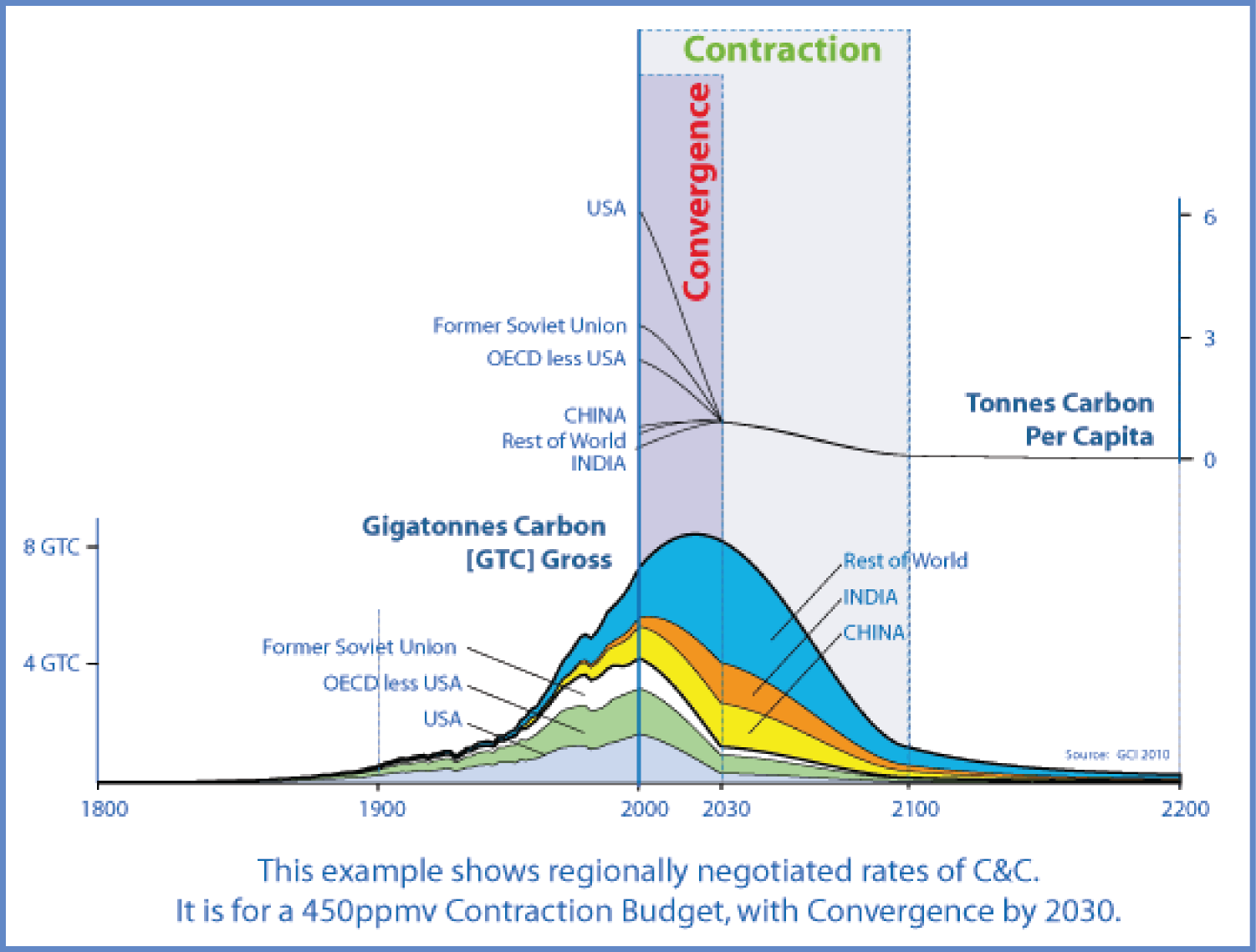
Aubrey Meyer's idea of 'Contraction and Convergence' is well worth looking up to understand how we could achieve 'Climate Justice without Vengeance' and there's a lot more information about the model here, or for an animation click here
Contraction refers to the 'full-term event' in which the future global total of greenhouse gas [GHG] emissions from human sources is shrunk over time in a measured way to near zero-emissions in a specified time-frame. The example shows 90% by 2100. Calculating future emissions contraction, looking at concentrations and sink performance, is a non-random way of responding to the objective of the UNFCCC.
Convergence refers to the full international sharing of the emissions contraction, where 'emissions-entitlements' for all countries result from them converging on the declining global per capita average of emissions arising under the contraction rate chosen. Converging at a rate to be agreed - the example shows 2030 - is a non-random way of responding to the principle of 'equity' in the UNFCCC, whilst still meeting its objective.
The Global Commons Institute [GCI] This was founded in 1990 in response to the mainstreaming of global climate change and based on the principles of 'equity' and 'survival'.
Energise Cambridge25 February 2012 - "C&C -The only fair way." The Independent Johann Hari
So how do we side with these ordinary Chinese citizens who can foresee the looming disaster for their country and their planet? And - a logical next step - how do we lock China into a global agreement to reduce global warming emissions?There is one simple concept that shows us the way forward, allowing the world's poor to develop without dooming us all. It is called Contraction and Convergence (C&C), and it was invented by the Global Commons Institute. The inventors of C&C point out that we already know that the level of greenhouse gases in the atmosphere needed to stay below a 2oC rise, the point of no return. They call this amount of greenhouse gas emissions the world's "carbon budget".
The only fair way to divide out the world's carbon budget is to allocate an equal amount to each living human being. So under C&C, each country would be given a budget based on their population per head. There are then two stages. First, the rich countries would have to buy the right to their far higher emissions from the poor - in the process compensating the poor for the warming we have already caused. Second, the poor countries would gradually increase their emissions while the rich whittled them down, until we eventually converged in the middle.
The future of the Earth depends on China
Johann Hari - The Independent
25 February 2012 - "My favourite formula is Contraction and Convergence." Fred Pearce; Guardian & Yale.
In any international negotiations, we need fairness in allocating emissions targets. And that, I believe, means allocations based on population size. We might need some separate rules for nations that still have fast-rising populations (though I can't believe that any country would surreptitiously boost its population to get a few more emissions permits). But long term we should be headed for national entitlements based on population.My favorite formula is called "contraction and convergence," developed by a splendidly single-minded, violin-playing South African living in London named Aubrey Meyer, and publicized through his NGO, the Global Commons Institute.
Under his concept, we would listen to what scientists are saying and contract global emissions so as to stabilize concentrations of greenhouse gases in the atmosphere. But then we would apportion emissions entitlements according to a formula that gradually would converge national targets toward a level based strictly on population.
Of course, countries would be free to trade their entitlements – so the U.S. could buy from India, and so on. But the initial allocations would be transparent and equitable. It would take all the horse-trading out of the international negotiations.
I recommend you check out the graphs of how this could happen on Meyer's web site — especially if you work for the Obama team that is deciding how to approach climate change negotiations this year. Like me you may be left wondering why the world didn't adopt this simple formula long ago.
In London this week, the UN's chief climate diplomat, Yvo de Boer, said he thought that "in the long run," emissions targets based on population were the way to go. So why not now? My proposal for Copenhagen is that governments grab the chance to think afresh on climate, and adopt this long-term solution that does away with the ridiculous anomalies that currently exist.
Key developing countries have long been exempt from efforts to reduce greenhouse gas emissions.
Now, as global climate talks move forward, that policy must change, writes Fred Pearce.
Yale Environment 360, part of the Guardian Environment Network25 February 2012 - Gaian Economics "C&C - Widely seen as fair."
Campbell’s Oil Depletion Protocol was recently presented at a conference of the international oil industry, but found itself sidelined and has yet to be ratified. It is similar in many ways to the Contraction and Convergence mechanism which aims to reduce climate change through inter-national agreement to cut carbon emissions, but which is better known and which seemingly has a higher chance of being ratified. In order to enable us to be in any kind of a position to withstand the imminent contractions in oil supply, we require mechanism that achieves the necessary cuts in oil consumption needed for a steady contraction of the economy, and which also brings CO2 emissions down to the 80% reduction required by 2050. Any mechanism that enables us to do this must be easily implementable, capable of being marketed as a positive step that isn’t a hassle, and widely seen as fair.
Gaian Economics24 February 2012 - prophetic & plastered, joining Green Party 21 years ago - "What a shwell pardy zhishiz!"30 PIECES (to Judas laissez faire)
there is only one issue
we are glad to be the one-issue-party
it's free and its a share issue
Gaia is the issue
Gaia
a
unique
priceless self-stabilizing
integrated venerable vulnerable
sphere of concern
the
one issue
is the sphere of concern
we are glad to share
the issue and
the concerna small part of Gaia is 'history'
a small part of history is 'humanity'
and a small part of humanity is 'mad'
a small part of the madness is a 'modern belief'
that a small part of a small part of Gaia owns Gaia
a part of Gaia is being privatised
(another part of Gaia is being privatised)
((anoth .. ......)why not just privatise all of Gaia!
a one-shares-issue-in-Gaia
and its free
free-shares/fair-shares
(fair'szh fair laisszhez-faire)FREE SHARES for zha SHINGLE-ISZHUE-PARTY
(only a fool couldn't enjoy zhis pardy)
What a shwell pardy zhishiz!
24 February 2012 - GCI responds to UNFCCC call for proposals for "Raised Ambition".
GCI MEMO to UNFCCC & Parties Re Decisions & Requests at COP-17 for ‘raised ambition’.
This Memo suggests the usefulness of Contraction & Convergence [C&C] in negotiating UNFCCC-compliance.
24 February 2012 - Rising atmospheric CO2 concentration - a very effective animation from Paleowave.This atmospheric CO2 animation has been done very effectively.
Working back from directly observed data now to ice-cores for past.
From Paleowave
23 February 2012 - US Joint Forces Command 2010 "Future Conflict" [More than mildly alarmed].
The Joint Operating Environment is intended to inform joint concept development and experimentation throughout the Department of Defense. It provides a perspective on future trends, shocks, contexts, and implications for future joint force commanders and other leaders and professionals in the national security field. This document is speculative in nature and does not suppose to predict what will happen in the next twenty-five years. Rather, it is intended to serve as a starting point for discussions about the future security environment at the operational level of war.
JOE 2010
Inquiries about the Joint Operating Environment should be directed to USJFCOM Public Affairs, 1562 Mitscher Avenue, Suite 200, Norfolk, VA 23551-2488, (757) 836-6555.
Distribution Statement A: Approved for Public Release
14 February 2012 - Like Valentine, worthy, strong & powerful, "C&C is a Well Tempered Climate Accord."
13 February 2012 - C&C "explained" in 'The Age of Stupid' Director Franny Armstrong, 10:10 Campaign Founder13 February 2012 - "Global participation & GHG target - C&C meets US criteria." Ecological Debt, Andrew Simms
"Contraction and Convergence [C&C] would reduce the complexity of climate negotiations to two simple variables that would need to be agreed:
• the target atmospheric concentration of CO2, and
• the date when entitlements converge to being equal per capita.
The approach offers the best chance of solving a great, and immensely destructive, international paradox. Interestingly, C&C would also fit the stated position of the otherwise recalcitrant United States. In his statements on climate change, President George W. Bush set out specific criteria for what sort of treaty the US would be willing to sign. They included: a truly global deal including emissions targets for developing countries (or, from another perspective, entitlements) and the need for a science-based approach. Contraction and convergence, with its global participation design and formal greenhouse gas concentration target is exactly such an approach."
"Ecological Debt"
Andrew Simms Board Member of the 10:10 Campaign13 February 2012 - Chris Rose; "only extraordinary individuals like Aubrey Meyer penetrated remote climate citadel."
Here are ten factors which have made it hard to campaign effectively ‘on climate’.
1. Scientists defined the issue
2. Governments ran off with the issue
3. There was no campaign [sequence]: NGOs adopted secondary roles
4. The issue had no public
5. The media were left to define the issue in visual terms
6. Governments soft pedalled on the issue
7. Scientists led calls for education of the public
8. Many NGOs tried to make the Framework Convention ‘work’
9. Other NGOs tried to connect it with “bigger issues”
10. There is no common propositionOnly extraordinary individuals such as Aubrey Meyer, father of ‘contraction and convergence’, managed to penetrate this remote citadel. NGOs could prioritise it but they were stuck in someone else’s game.
Campaign Strategy - Why Campaigning on Climate is Difficult
Chris Rose Former Campaign Strategist for Greenpeace13 February 2012 - "The Transitional Framework is known as C&C." Tony Juniper while still Director FoE.
“If the world is to stabilise concentrations of greenhouse gases at a safe level, a ‘global emissions budget’ consistent with the target concentration will need to be implemented. This raises questions about how to allocate this global emissions budget in a manner that is fair and reflects developing country concerns that they have adequate room for their conomies to grow. Agreeing emission limits on a ‘per capita basis’ would, as a guiding principle, ensure that every person is entitled to release into the atmosphere the same quantity of greenhouse gas emissions. Without a long term guarantee of equitable emission entitlements, developing countries are likely to continue to refuse to participate in international action on climate change thus providing an excuse for further procrastination by the US. An immediate per capita allocation of emissions would not stand much chance as it would mean that industrialised countries would have to cut their emissions by far more, while many developing countries could increase theirs. There will have to an adjustment period in which nations’ quotas converge on the same per capita level. This transitional framework is known as ‘Contraction and Convergence’ and was first proposed by the London based Global Commons Institute.”
Tony Juniper Director of Friends of the Earth on C&C13 February 2012 - C&C Foundation; "Communist or Right-Wing Plot? None dispute C&C's science rationale."
Deposition to UNFCCC from the C&C Foundation
C&C has been condemned as a communist plot by free-marketeers and a rightwing conspiracy by people who don't trust markets. This suggests it offers a balanced approach, but nobody disputes its mathematical, scientific and even musical, rationale. Many people have described C&C as 'morally compelling' but this misses the point that fairness is secondary to counting and cutting carbon emissions. The greatest injustice would be for poor countries (those most vulnerable to the impacts of climate change) to sign up to a global strategy to prevent runaway climate change which offers reparations for
'historic emissions' by industrialised nations, but fails to cut global emissions fast enough to prevent disaster.
C&C Foundation13 February 2012 - "C&C is Fair Trade - an equitable sharing of the right to emit." Peter North Ecolocalisation.
It is not just neoliberals who argue this: advocates of fair trade argue that the promise of global integration should be made real for the global South by the North opening its markets to South, with goods receiving a fair price and produced under good labour and environmental conditions. The South has a right to development, even in a globally constrained world, and should not be expected to pay the price for problems caused by high mass consumption in the global North (Baer, Atanasiou et al., 2007). From this perspective, the response to climate change and peak oil should not be localisation, but an equitable sharing of the right to emit and to burn oil, such as Aubrey Meyer’s proposals for ‘Contraction and Convergence’, Carbon Trading, and the Clean Development Mechanism.
Ecolocalisation as an urban strategy in the context of resource constraint and climate change - A (dangerous) new protectionism?
Peter North13 February 2012 - Dr Paul Anderson "C&C addresses the conflict-of-rates"
A Critique of this Research Handbook by Dr Paul Anderson
If effectiveness means ‘problem-solving’ then any assessment of IEL needs not only to identify problem-solving means (which the Handbook ably does) but also the nature of the problem itself, about which the Handbook is largely silent. Although justice cannot be done here to the meanings of GEC, understood as a term of art used to describe avoidable environmental problems which (i) arise cumulatively from economic practice, (ii) differ from earlier instances of induced change by virtue of their scale and (iii) affect the international community by affecting shared resources or by otherwise being so widespread or serious as to qualify as problems of common concern,11 two characteristics are immediately relevant to the exercise. First, since GEC involves the collective use of natural resources as a source of, and a sink for economic activity, at a rate greater than that at which resources themselves can be replenished, it is characterised as a ‘conflict of rates’. See Meyer A. The Case for Contraction and Convergence in Surviving Climate Change: The Struggle to Avert Global Catastrophe
Research Handbook on the Theory and History of International Law13 February 2012 - Bill McGuire "GCI website - invaluable resource; astonishing range of endorsements for C&C."
"The GCI website is a must view site for anyone interested in the only serious and workable mechanism for reducing greenhouse gas emissions in-line with the science, and who wants to find out more about CONTRACTION AND CONVERGENCE. That this is the only viable GGE reduction mechanism currently on the table, and by far the most widely supported, is clear from the astonishing number and range of endorsements listed here; from the UN; from politicians; from academics; and from individuals and institutions across the climate change landscape. It also constitutes a tremendously comprehensive and in-depth repository that provides an invaluable resource for supporters of C&C; for those keen to become such; for the climate science literati and glitterati; and for the plain curious. Access it; read it; absorb it; and spread the word."
Bill McGuire
Benfield Professor of Geophysical Hazards UCL
13 February 2012 - "C&C must be present in future structure of climate regime."
The history of the climate negotiations shows that such commitments for developing countries, even for the most powerful and resource rich of them, can only be within reach if they are perceived as fair and just. This is a political fact. The concept of Contraction and Convergence may be very difficult to give concrete shape, but the idea needs to be present in the future structure of an international climate regime. Principles of justice must however, also be reflected at the national level where they raise difficult problems of equality, with potentially far-reaching politcal connotations.
Fairness in Adaptation to Climate Change
W. Neil Adger, Jouni Paavola, Saleemul Huq, M. J. Mace12 February 2012 - Swedish Climate Futures "Our Logo inspired by C&C, elegant reminder of challenge we face."
Climate Futures - The Inspiration behind our Corporate Logo
Our logo was inspired by the “convergence and contraction” concept and posters that were present at many of the international climate change negotiations that our founder attended after the Kyoto Protocol was agreed in 1997. Developed by the Global Commons Institute in the early 1990s, the Contraction and Convergence strategy consists of reducing overall emissions of greenhouse gases to a safe level (contraction), resulting from every country bringing its emissions per capita to a level which is equal for all countries. It was intended to provide the basis for negotiations of an international agreement with a more stringent target than the Kyoto Protocol. Such action would reduce anthropogenic CO2 emissions to avoid dangerous climate change impacts caused by the greenhouse effect. While politically and perhaps even technologically unfeasible at this time, the concept still serves as an elegant reminder of the challenge humanity faces. It also visualizes the unequal use of our global resources by a minority of the people on the planet, and reminds us that many people still face the daily challenge of access to reliable energy and other basic services that our modern lifestyle takes for granted.

Climate Futures11 February 2012 - BMA "C&C brings overall emissions to a safe level and equal per capita for all countries."
Contraction and convergence conceived by the Global Commons Institute (GCI) in the early 1990s consists of reducing overall emissions of GHGs to a safe level, ’Contraction’, where the global emissions are reduced because every country brings emissions per capita to a level which is equal for all countries, ’Convergence’. For more information on Contraction and Convergence please see
BMA 2008 “How can the impact of climate change be reduced?”10 February 2012 - "C&C the most practical and equitable." Environmental Health Insights Libertas Academica
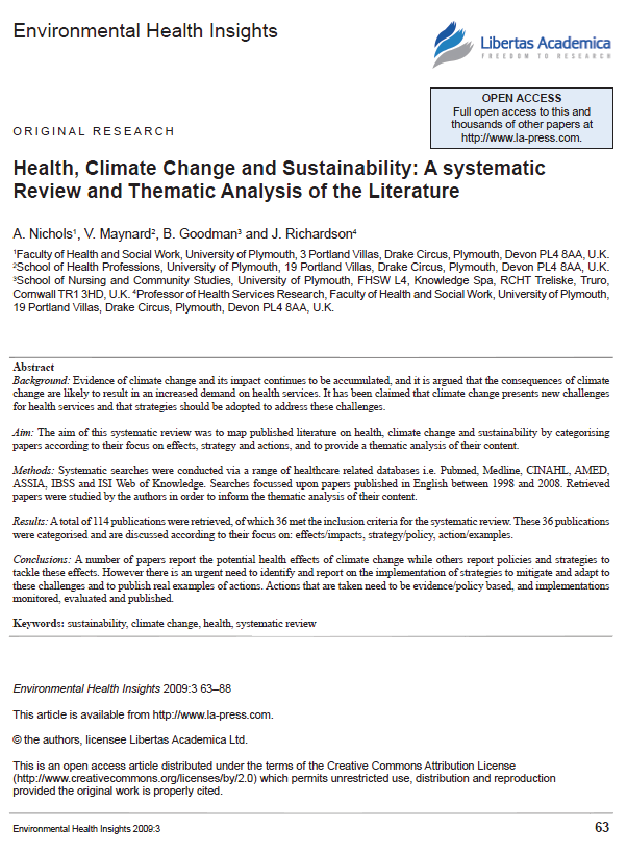
Contraction and convergence
Contraction and convergence has been proposed as the most practical and equitable strategy for reducing CO2 emissions and tackling climate change. This approach has also been proposed by the Global Common Institute and would require the establishment of a global carbon budget with allocation of entitlement of carbon to each region, country or individual18 and major changes in all sections of the economy including: electricity production, transport, housing, agriculture, industry and commerce outlines the injury control benefits that would result from carbon rationing.
Health, Climate Change and Sustainability: A systematic Review and Thematic Analysis of the Literature
A. Nichols 1, V. Maynard 2, B. Goodman 3 and J. Richardson 4
1 Faculty of Health and Social Work, University of Plymouth, 3 Portland Villas, Drake Circus, Plymouth, Devon PL4 8AA, U.K.
2 School of Health Professions, University of Plymouth, 19 Portland Villas, Drake Circus, Plymouth, Devon PL4 8AA, U.K.
3 School of Nursing and Community Studies, University of Plymouth, FHSW L4, Knowledge Spa, RCHT Treliske, Truro, Cornwall TR1 3HD, U.K.
4 Professor of Health Services Research, Faculty of Health and Social Work, University of Plymouth, 19 Portland Villas, Drake Circus, Plymouth, Devon PL4 8AA, U.K.
Environmental Health Insights
Editorial Board MembersCaleb Adegbenro, PhD PhD FRSH
Community Health, College of Sciences, Obafemi Awolowo University, Ile-Ife, Osun, NigeriaAlice L. Anderson, PhD
Professor of Environmental Health Sciences and Safety Program, ECU College of Health and Human Performance, East Carolina University, Greenville, North Carolina, USAStephen D. Arnold, PhD
Professor, Department of Health Science, New Mexico State University, Las Cruces, New Mexico, USA
Akshaya Neil Arya, MD CCFP FCFP
Adjunct Professor Environment and Resource Studies Adjunct Professor, Health Studies and Gerontology, University of Waterloo; Assistant Clinical Professor,Family Medicine McMaster University; Adjunct Professor, Family Medicine, University of Western Ontario, Waterloo, Ontario, Canada
Gerald Mark Barron, MPH
Associate Professor, Department of Health Policy and Management, Center for Public Health Practice, Graduate School of Public Health, University of Pittsburgh, Pittsburgh, Pennsylvania, USA
Joe E. Beck
Professor, Department of Environmental Health, Eastern Kentucky University, Richmond, Kentucky, USA
Lalita Anne Bharadwaj, PhD
Assistant Professor, Toxicology, College of Nursing, University of Saskatchewan, Saskatoon, Saskatchewan, Canada
Cheikh Saad Boye, PhD
Professor; Dean of the Faculty of Medicine; Director of the Post graduate College of Health Sciences and Environment, Department of Microbiology, University Cheikh Anta Diop (UCAD), Dakar, Senegal
Lars Carlsen, DSc
Professor, Awareness Centre, Roskilde, Denmark
William S. Carter, PhD CIH CET
Professor of Environmental Safety and Health Management, Environmental Safety and Health Management, College of Science, The University of Findlay, Findlay, Ohio, USA
Enrique Cifuentes, MD PhD
Professor and Researcher, Environmental Health, National Institute of Public Health, Cuernavaca, Morelos, MexicoAidan A. Cronin, PhD
Associate Research Fellow, Robens Centre for Public & Environmental Health, University of Surrey, Guildford, Surrey, UK
Malcolm P. Cutchin, PhD
Professor, Occupational Science and Occupational Therapy, Division of Occupational Science, Department of Allied Health Sciences, School of Medicine, University of North Carolina, Chapel Hill, North Carolina, USABrenda L. Elledge, DrPH
Assistant Professor, Department of Occupational and Environmental Health; Director, Southwest Center for Public Health Preparedness, College of Public Health, University of Oklahoma Health Sciences Center, Oklahoma City, Oklahoma, USAOana Violeta Enick, MET
Environmental Management Branch, British Columbia Ministry of Environment, Surrey, British Columbia, Canada
Daniel Mark Harper, MPH REHS DHSP DAAS
Assistant Professor, Department of Environmental Health Science, College of Health Science, Eastern Kentucky University, Richmond, Kentucky, USA
Janice Harper, PhD
Assistant Professor, Department of Anthropology, University of Tennessee, USACarolyn Hester Harvey, PhD CIH CHMM
Associate Professor & Coordinator of MPH-EHS Program, Department of Environmental Health Science, College of Health Science, Eastern Kentucky University, Richmond, Kentucky, USAPeter Anthony Harvey, PGCE MSc PhD
Associate, Water, Engineering and Development Centre, Loughborough University, Loughborough, UK
Sharron LaFollette, PhD
Associate Professor & Chair, Department of Public Health, University of Illinois at Springfield, Springfield, Illinois, USALéo Heller, PhD
Associate Professor, Department of Sanitary and Environmental Engineering, Federal University of Minas Gerais, Belo Horizonte, BrazilGuy Hutton, PhD
Consultant, Switzerland
Md. Jakariya, PhD
Faculty Member, Department of Environmental Sciences, Jahangirnagar University, Savar, Shaka, Bangaladesh
Blanca Jimenez-Cisneros, PhD
Professor, Environmental Engneering, Institute of Engineering, Universidad Nacional Autonoma de México (National Autonomous University of Mexico), Mexico City, MexicoGuang Jin, DSc PE
Associate Professor of Environmental Health, Department of Health Sciences, Illinois State University, Normal, Illinois, USANadia Juzych, DSc MS
Senior Research Scientist, Michigan Public Health Institute, Okemos, Michigan, USARichard A. Kreutzer, MD
Chief, Division of Environmental and Occupational Disease Control, California Department of Public Health, Sacramento and Richmond, Calfornia, USAEphraim Massawe, PhD
Professor of Industrial Hygiene, Occupational and Environmental Health, Southeastern Louisiana University, LA, USA
Judith Mazique, JD MPH
Program Director of Environmental Health; Assistant Professor; President of the Association of Environmental Health of Academic Programs, Health Sciences Department, Texas Southern University, Houston, Texas, USA
Jane A. McElroy
Assistant Professor, Family and Community Medicine, School of Medicine, University of Missouri, Columbia, Missouri, USAAnthony J. McMichael, PhD
Professor, National Centre for Epidemiology & Population Health, College of Medicine and Health Sciences, The Australian National University, Canberra, ACT, AustraliaMichael N. Moore, PhD
Professor and Science Co-ordinator, UK Joint Environment & Human Health Programme, Plymouth Marine Laboratory, Plymouth, Devon, UK
Michele Morrone, PhD RS
Associate Professor, Environmental Health Science, Ohio University, Athens, Ohio, USA
Ademola M. Omishakin, MPH PhD MBA
Professor and Coordinator, Environmental Health Program, Department of Natural Science and Environmental Health, Mississippi Valley State University, Itta Bena, Mississippi, USA
Sheila Davidson Pressley, MS REHS
Assistant Professor, Department Environmental Health Science, College of Health Sciences, Eastern Kentucky University, Richmond, Kentucky, USA
Pamela Ransom
Assistant Professor, MPA Program, School of Business, Public Administration and Information Sciences, Long Island University, Brooklyn Campus, New York City, New York, USA
David B. Resnik, JD PhD
Bioethicist, National Institute of Environmental Health Sciences, National Institutes of Health, Research Triangle Park, North Carolina, USABruce Rothschild, MD
Professor of Medicine, Northeastern Ohio Universities College of Medicine; Adjunct Professor of Biomedical Engineering, University of Akron; Research Associate, Carnegie Museum of Natural History, Pittsburgh; Research Associate, Museum of Natural History, University of Kansas, Ohio, USA
May Linda Samuel, MPH DD PhD ThD
Associate Professor of Biology and Coordinator of Environmental Health Sciences Technology and Public Health, Division of Mathematics and Natural Sciences, Allen University, Columbia, South Carolina, USA
Cheng B. Saw, PhD
Professor and Director of Medical Physics, Division of Radiation Oncology, Penn State Hershey Cancer Institute, Hershey, Pennslyvania, USA
Bhanwar Lal Sharda, MD
Professor, Department of Pediatrics, RNT Medical College, Krishna, Udaipur, Rajasthan, IndiaLawrence K Silbart, PhD
Professor and Department Head, Allied Health Sciences, Unversity of Connecticut, Storrs, CT, USAGary S. Silverman, DEnv
Professor, Director of the Environmental Health Program; Interim Director of the Environmental Studies Program, Bowling Green State University, Bowling Green, Ohio, USA
Dale Jay Stephenson, PhD CIH
Associate Professor and Director, Environmental and Occupational Health, Community and Environmental Health, College of Health Sciences, Boise State University, Boise, Idaho, USALyndall Margaret Strazdins, PhD
National Centre for Epidemiology and Population Health, ANU College of Medicine and Health Sciences, The Australian National University, Canberra, Australian Capital Territory, AustraliaWilliam A. Suk, PhD MPH
Acting Deputy Director, National Institute of Environmental Health Sciences, and National Toxicology Program, National Institutes of Health, US Department of Health and Human Services, Research Triangle Park, North Carolina, USAJohn Sullivan, MA
Co-Director, Public Forum & Toxics Assistance Division, Division of Environmental Toxicology, Department of Preventive Medicine & Community Health; Community Outreach & Education Core, Sealy Center for Environmental Health and Medicine, National Institute of Environmental Health Sciences Center, University of Texas Medical Branch, Galveston, Texas, USAMansoureh Tajik, PhD
Researcher, Department of Community Health and Sustainability, University of Massachusetts at Lowell, Lowell, Massachusetts, USA
Thomas Daniel Tenkate, DrPH
Senior Lecturer and Postgraduate Course Coordinator, School of Public Health, Faculty of Health, Queensland University of Technology, Brisbane, Queensland, Australia
Aurelio Tobías, MSc CStat PhD
Senior Medical Statistician, National School of Public Health, Instituto de Salud Carlos III, Madrid, Spain
Paul Tomboulian, PhD
Distinguished Emeritus Professor of Chemistry, Department of Chemistry, Oakland University, Rochester, Michigan, USA
Wei-Hsung Wang, PhD
Associate Professor, Center for Energy Studies, Louisiana State University, Baton Rouge, Louisiana, USAPaul A Zandbergen, PhD
Associate Professor, Department of Geography, University of New Mexico, Albuquerque, New Mexico, USA
F. Benjamin Zhan, PhD
Professor, Department of Geography, Texas Center for Geographic Information Science, Texas State University, San Marcos, Texas, USA10 February 2012 - Manifesto from medical professionals, "C&C fair & equitable for all countries around the globe."
Action to reduce substantially carbon emissions in a way that is fair and equitable for all countries around the globe see Global Commons Institute’s policy of Contraction and Convergence, which is a carbon cap and trade policy designed to reduce CO2 emissions.
THE CONVERGENCE OF HEALTH AND SUSTAINABLE DEVELOPMENT
A MANIFESTO AND A NETWORKSIGNATORIES
Faculty of Public Health of the Royal Colleges of Physicians of the United Kingdom
Scottish Environmental Protection Agency
UK Public Health Association
Sheila Adam, Interim Regional Director of Public Health, NHS London
Edwina Affie, Public Health Consultant
John Ashton, title to be confirmed
Ian Baker, Hon. Reader in Public Health, University of Bristol
Geoff Barnes, Health Policy Adviser, Sustainable Development Commission
Ian Basnett, Assistant Director of Public Health, North East London Strategic Health Authority
Chris Bentley, Director of Public Health & Clinical Engagement, South Yorkshire Strategic Health Authority
Graham Bickler, Regional Director , South East Health Protection Agency
Chris Birt, Consultant / Honorary Senior Lecturer in Public Health, Central Liverpool PCT
Leslie Boydell, Consultant in Public Health Medicine, Institute of Public Health in Ireland
Nick Cavill, Cavill Associates
Sir Ken Collins, Chairman, Scottish Environment Protection Agency
Anna Coote, Public health specialist
Fiona Crawford, Public Health Programme Manager, Glasgow Centre for Population Health
Andrew Furber, Honorary Senior Clinical Lecturer/ Consultant in Public Health Medicine, South East Sheffield PCT
Campbell Gemmell, Chief Executive, Scottish Environment Protection Agency
Mike Gill, Visiting Professor in Public Health, University of Surrey
Sir Muir Gray, Director of Clinical Knowledge, Process and Safety, NHS Connecting for Health
Jenny Griffiths, independent consultant
Rod Griffiths, President, Faculty of Public Health
Siân Griffiths, Director, School of Public Health, The Chinese University of Hong Kong
Sir Andy Haines, Professor, London School of Hygiene and Tropical Medicine
Neil Hamlet, Consultant in Public Health Medicine, NHS Fife
John Harvey, Director of Public Health, Havering PCT
Tony Hedley, Chair Professor in Community Medicine, Department of Community Medicine, School of Public Health, The University of Hong Kong
Alison Hill, Director, South East Public Health Observatory
Linda Hillman, Consultant in Public Health and Dental Public Health, Norfolk Public Health Network.
Phil Insall, Director, Active Travel, Sustrans
Lizi Irvine, Senior Lecturer, Napier University, Edinburgh
Julie Hotchkiss, Director of Public Health, Ashton,Leigh & Wigan Primary Care Trust
Richard Jarvis, Consultant in Health Protection, Cheshire & Merseyside
Jack Jeffery, Immediate Past Chairman of the Royal Institute of Public Health and Director, Durham County Waste Management Ltd.
Alyson Learmonth, Director of Public Health and Health Improvement, Sedgefield PCT
Giovanni Leonardi, Consultant in Environmental Epidemiology, Health Protection Agency, Centre for Radiation, Chemical, and Environmental Hazards
Carolyn Lester, Lead for Health Inequalities & Equity, National Public Health Service for Wales
Ann McCarthy, Senior Lecturer, Division of Criminology, Public Health & Policy Studies, School of Social Sciences, The Nottingham Trent University
John Middleton, Director of Public Health, Sandwell
David Miles, Director of Public Health, West of Cornwall Primary Care Trust
Ruairidh Milne, Clinical Senior Lecturer, School of Medicine, University of Southampton
George Morris, Professor, Senior Medical Officer, Scottish Executive,
Maggi Morris Director of Public Health, Preston Primary Care Trust
Aldo Mussi, Snr Lecturer in Health Development, Faculty of Health, University of Central England
David Ogilvie, MRC fellow, MRC Social and Public Health Sciences Unit, Glasgow
Lindley Owen, Director, Mobilise! Project, Manager Sustrans Cornwall & Plymouth
David Pencheon, Director, Eastern Region Public Health Observatory
Cathy Read, Consultant in Public Health Medicine, Barnsley Primary Care Trust
Paul Redgrave, Director of Public Health, Barnsley Primary Care Trust
Sue Roaf, Councillor Professor, Oxford Brookes University
Ian Roberts, Professor of Epidemiology and Public Health, London School of Hygiene and Tropical Medicine
Helen Ross, Public Health Development Manager, Greater Nottingham Health and Environment Partnership,
Harry Rutter, Deputy Director, South East Public Health Observatory
Paul Scourfield, Chief Executive, Faculty of Public Heatlh
Jackie Spiby, Consultant in Public Health, North East London Strategic Health Authority
Cameron Stark, Consultant in Public Health, NHS Highland
Robin Stott, vice chair Medact
Jeremy Wight, Director of Public Health, North Sheffield Primary Care Trust
Ewan Wilkinson, Consultant in Public Health, Liverpool Primary Care Trusts10 February 2012 - "C&C Rational Fair Climate Justice without Vengeance" Jenny Jones Green Mayoral Candidate
"Contraction and Convergence is a prime example of a UNFCCC-compliant Global Climate Change Framework. It is a rational formulation for reconciliation of 'Climate Justice without Vengeance'. Several ideas derived from C&C have surfaced since Kyoto with ideas that can be perhaps in various ways incorporated into C&C. However, there is an overwhelming need for an over-arching UNFCCC-compliant Framework that enables the globally competing interests of the over-consuming and the under-consuming to be reconciled with each other and with the objective of the UNFCCC in a non-random manner. We feel that C&C is the veteran and indeed the apex example of this and urge you to consider our request. At Kyoto in December 1997 and shortly before they withdrew from these negotiations, the USA stated, “C&C contains elements for the next agreement that we may ultimately all seek to engage in.” The adversarial reasons for their withdrawal then were in play again at COP-15: C&C answers this in a unifying and constitutional way and the need for this answer becomes increasingly critical."
Jenny Jones & Darren Johnson
Green Party Group London Assembly
With 500 others Letter and signatories at10 February 2012 - "C&C the only truly equitable model" Christine Milne, Australian Greens
Contraction and convergence is the only truly equitable model for international action, under which the world moves to a position where every person is entitled to the same emissions as everyone else. This is a fair and equitable model when high per capita emitters agree to act fast to come down to the level of others. Garnaut, however, has used it, based on Australia’s high population growth projections, to argue that Australia should move slowly to reduce our per capita emissions.
Green Senator Christine Milne Australia
With PM Julia Gillard [Microphone] & others10 February 2012 - Dominion or Degradation? "Join ABC in campaigning for C&C" Rabbi Jeffrey Newman
‘I have set before you life and death, the blessing and the curse. Therefore, choose life’. (Deuteronomy 30:19)
In February, the Board of Deputies of British Jews, an august and somewhat conservative body more usually concerned with anti-Semitism and defence of Israel than with the environment, inaugurated a new web-site hosted by Operation Noah, an environmental group celebrating its tenth anniversary. The web-site highlights good practice and encourages the community, both individuals and synagogues, to change behaviour. Currently under consideration is an ambitious proposal to ‘green the community’ by providing model projects of energy conservation and renewable generation for communal institutions, schools, synagogues and families.
One group, the Rabbis of the Reform Movement, has voted to endorse the Earth Charter, a global declaration of principles for a just, sustainable and peaceful twenty-first century and are now being urged to join the Archbishop of Canterbury in campaigning for Contraction and Convergence. This is an international movement asking governments of the world to agree to contract the amount of greenhouse gases going into the atmosphere to an amount the Earth can bear and share out the right to emit greenhouse gases on a per-head-of-population basis.
Those richer countries where the emissions far outweigh the population, in justice,pay for their surplus and the payments go to those countries where the emissions are much less but the populations much greater, namely the developing world.
Dominion or Degradation - Rabbi Jeffrey Newman
10 February 2012 - The Resource Cap Coalition "Tough C&C Scenario Needed."
Industrial economies such as the European Union (EU) use much more than their fair share of resources, and thus they play a major role in environmental degradation. Moreover, most fossil fuels, minerals, and biomass consumed in Europe are extracted in other countries. Hence the EU owes an “ecological debt” to impoverished countries for the use of their resources and ecological space. According to the International Resource Panel, an absolute reduction of resource use on a global level is necessary to make progress towards a sustainable economy. Under a tough contraction and convergence scenario, industrialized countries should reduce their per capita resource use (average metabolic rate) by 66 – 80 %, while a 10 – 20 % reduction in developing (non-industrialized) countries would be needed. Such a scenario, which in fact would only mean going back to Year 2000 levels of global resource consumption, would be consistent, in terms of carbon use per capita, with the IPPC recommendation to keep global warming below 2ºC.
The Resource Cap Coaltion
09 February 2012 - Next Venus Transit 06 06 12 "40 years for full-term C&C event to avoid runaway climate change".As requested by UNFCCC COP-17 re trying to 'raise our levels of ambition'
[not-to-mention the tone of the debate . . . ] . . .Acceptable [C1] Dangerous [C2] Impossible [C3]
Risk overview09 February 2012 - "A trustworthy voice" Dr Mark Levene of the Crisis Centre at Southampton University
Dr Mark Levene of the Crisis centre at Southampton University
The debate around climate change becomes more fractious and fragmented.
So considerations of 'who do you trust' arise. Mark Levene is one of the people that you do.Within the contested 'appeals to reason' that climate change debate has triggered,
Mark's measured consideration of the full-context, make his a credible and trustworthy voice.08 February 2012 - History at the End of the World "Without C&C we are on course for planetary disaster."
Aubrey Meyer's principle of Contraction and Convergence.
In seeking a route to an internationally negotiated reduction of carbon emissions to a scientifically-determined stable level founded on the principle of per capita equity, Meyer envisages a timeline in which the necessary global 'convergence' would be dependent on explicit rates of deep emissions (‘contraction') made by the high carbon-emitting countries. In other words, Meyer, in considering humanity's predicament in its totality, implicitly highlights the historical imbalance between the powerful, industrialised West and the subordinate South. This, he argues, might only be comprehensively reconciled by a UN adjudicated process in which the West's annually diminishing entitlement to pollute would be traded in favour of the poorest (lowest carbon-emitting) countries' right to develop: that is until carbon equity- 'convergence' - is reached. The problem is one of time: and we are running out of it, fast. The science is clear that without radical deceleration of greenhouse gas emissions we are set on course for planetary disaster. Yet, for all the reams of information we now possess on climate change, the sort of social transformation necessary to meet the ch allenge hardly seems achievable on the basis of our current state of consciousness. To arrive there would seem to demand something else: 'some utopian leap, some human rebirth, from Mystery to renewed imaginative life.' The words are that of social historian and activist, E.P. Thompson, not long before his death, writing of that great visionary, William Blake, who broke all the rules to imagine a new post-apocalyptic age for humankind. Should we now feel enjoined to think with Blake, with Thompson, with Meyer and all the other modern-and ancient- prophets about our full ethical potential in the world?
History at the End of the World Mark Levene
08 February 2012 - "C&C basic concept could not be more simple" UNA the Dispatch
A public meeting on climate change at Friends House in Euston Road in April 2008, asked "Are our leaders doing enough?" Hilary Benn [the then Minister at DEFRA] said that decisions on sharing the burden should be based on "global social justice."Indeed, but this was not followed up. What does the phrase mean? In this context, surely the principle of Contraction and Convergence (C&C), which the All Party parliamentary Climate Change Group (APPCCG) has called "the irreducible response to climate change"; its DVD promoting the concept - "An Incontestable Truth" - contains powerful endorsements from a great many knowledgeable persons, including Sir Crispin Tickell and Dr Rowan Williams.
I completely fail to understand why there is no reference to C&C in the Bill. I asked Hilary Benn about this at another meeting in March; he replied with mild irritation that the concept was mathematically complex and all very well for the long term, but "we have to do it in bits."
There may be ingenious mathematical projections in its development, but the basic concept could not be more simple: as Milton put it, "an equal and beseeming share." The Bill should – in my opinion – begin with a firm commitment in principle to the concept of C&C, so that we all (in this and other countries) know where we are heading, and then set out some of "the bits" with which we will start the process. There is not the slightest prospect that developing countries will agree to control their emissions until they see that rich countries – and we claim to be a leader - start to contract their own.
UNA Dispatch - Peter Greaves on Hilary Benn's Response to C&CBear in mind that GCI had had Government responses to enquiries and FOI requests about why they were blocking C&C at this stage. Answers provided redacted minutes of meetings and refusals with explanations saying it was 'not in the national interest' to reveal this information!
08 February 2012 - Ken Livingstone Mayor of London, "supports principle of C&C".Ken Livingstone states in this week's New Statesman that his, "greatest fear fear is that humanity is virtually extinct by the end of the century. It's a very real risk with climate change." When he was Mayor of London he put the GLA solidly behind C&C in this report. He contests the present mayor Boris Johnson for the position very soon.
Contraction and convergence
Contraction and convergence is a simple approach to distributing the total greenhouse gas emission reductions required internationally, between various countries or groups of countries. The approach is based on two principles: 1 there is an upper limit to acceptable global atmospheric greenhouse gas concentration, beyond which the damage from climate change would not be acceptable 2 the atmosphere is a global commons, so that as individuals we all have equal rights to emit greenhouse gases. Contraction and convergence is arguably the most widely supported, equitable, global approach to tackling climate change and the Mayor supports the principle of contraction and convergence. The contraction and convergence proposal was developed by the Global Commons Institute, London. Details of its origins, methodology, and support are available online at the GCI website.
Green light to clean power
The Mayor’s Energy Strategy
08 February 2012 - Transport Geography Journal, "Stern makes climate link to poverty, building on C&C principle."
Climate change is a global problem and across the world there are major difficulties being experienced in reducing carbon dioxide (CO2) emissions. The transport sector in particular is finding it difficult to reduce CO2 emissions. This paper reports on two studies carried out by the authors in London (UK) and Delhi (India). It considers the common objectives for transport CO2 reduction, but the very different contexts and baselines, potentials for change, and some possible synergies. Different packages of measures are selected and scenarios developed for each context which are consistent with contraction and convergence objectives. CO2 reduction potentials are modelled and quantified by package and scenario. London is considering deep reductions on current transport CO2 emission levels; Delhi is seeking to break the huge projected rise in transport CO2 emissions. The scale of policy intervention required to achieve these goals is huge and there is certainly little public discussion of the magnitude of the changes required. The paper argues for a ‘strategic conversation’ at the city level, using scenario analysis, to discuss the priorities for intervention in delivering low carbon transport futures. A greater focus is required in developing participatory approaches to decision making, alongside network investments, urban planning, low emission vehicles and wider initiatives. Aspirations towards equitable target emissions may assist in setting sufficiently demanding targets. Only then is a wider awareness and ownership of potential carbon efficient transport futures likely to take place.Stern (2009) builds on and moves beyond this discourse, developing ‘contraction and convergence’ principles (drawing from Meyer and GCI, 2000) and a ‘blueprint’ for change. He makes the link between climate change and poverty, arguing that both issues need to be addressed, hence the strong equity dimension. Stern argues against delaying action and instead that we should invest immediately and substantially in clean technologies and low carbon energy.
Transitions to low carbon transport futures: strategic conversations from London and Delhi
Robin Hickman, Olu Ashiru, David Banister08 February 2012 - "For Global Justice We Need Resource Use Based on C&C." Public Health Manchester
Phil Hanlon talks very much about what’s needed not just as a fifth wave but as a new era, not just for public health but for society. The challenges of climate change and peak oil threaten the whole of modernity and could therefore knock back so many of the public health successes that have been a product of the modern age. They argue that we need new economic models that don’t depend on permanent growth and resource depletion, and that for global justice we need these to adopt models of resource use based on contraction and convergence – we can’t achieve equity by levelling the poor up to the lifestyles of rich western nations, because that’s not sustainable, so we need to reduce our resource use in order that the whole world can live within its total resource envelope. At an individual level the suggestion is that if we’re integrating these dimensions of life effectively we need a much more holistic approach, one that recognises the importance of subjective factors to a much greater extent than at present. One of the contributors to the group is David Reilly from the centre for integrative care at the Glasgow Homeopathic Hospital – a doctor who became increasingly frustrated with modern medicine, moved towards alternative approaches, and now is even moving to some extent away from these towards what he describes as mobilising people’s inner resources for self healing.
Public Health and the role of Culture07 February 2012 - Charity News UK "C&C the Alternative," says Christian Aid
With the first phase of the Kyoto Protocol, the only international law to protect the world’s climate, set to end next year countries are discussing whether to follow through with previous promises to negotiate a second phase of the legislation. According to Christian Aid, the only alternative would be to adopt a voluntary system where everyone is accountable for their own emissions, but this would not be legally binding. Originated by the Global Commons Institute, the alternative proposal, dubbed "contraction and convergence", stated that rich countries should "contract" their emissions with the aim that global emissions "converge" at equal levels based on the amount of pollution scientists think the planet can take.
Charity News UK07 February 2012 - Innovait "Canvass for carbon entitlements within C&C"
Education and advocacy
The UK Climate Change Act stipulated that the UK is legally bound to reduce emissions from 1990 levels, by 34% by 2020 and by 80% by 2050. Figure 1 illustrates these targets for the English NHS. This huge challenge will require the growth of emissions to be not just moderated but reversed, with a reduction in absolute emissions. This will only be achieved with urgent radical change. Be a sustainability advocate and lead by example. Sign up to the Good Corporate Citizen Assessment model. Good corporate citizenship is using corporate power and resources in a way that benefits the social, economic and physical environment. Take a global health perspective; canvas for personal carbon entitlements within a fair shares global framework such as ‘Contraction and Convergence’ (Global Commons Institute). Help to stabilize population growth by promoting literacy and access to birth control through Marie Stopes or the International Planned Parenthood Federation. Put sustainability on the agenda, in the practice or on committees. Doctors have a strong voice. Increase your influence and that of all health professionals by joining the Climate and Health Council.
Dr Sally A. Aston - Innovait
07 February 2012 - American Physical Society "C&C seems likey to replace the Kyoto Accord."
The new international "contraction and convergence'' plan, which seems likely to replace the Kyoto accord as a more complete solution to the CO2 problem, calls for replacement of almost all fossil fuel use by 2050. Aside from the relatively dubious concept of carbon sequestration with coal, for base power production the only multi-terawatt scale options seem to be fission, fusion, TSP, and SSP [12]. Fission is by far the most well-established of those four, but it may be more limited than we think - a recent MIT analysis[13] sees at most a tripling of world-wide nuclear power installations to 1500 GW capacity over the next 50 years, just to maintain nuclear power at roughly the 20% of electric power it generates today. Given the severity and urgency of the energy transition problem, and the fact that multi-trillion-dollar investments will be required, technologies in support of all four energy options (along with carbon sequestration) should be generously funded. SSP and TSP would both benefit from PV-related R&D funding; other R&D areas for SSP include wireless power transmission, lightweight space structures, and cost effective space launch, all of which could have significant spinoffs to other areas (for example, communications satellite capabilities) as well. Funding this range of technologies adequately, at least at the billion-dollar per year level that fission and fusion currently receive, will be essential to our future prosperity.
American Physics SocietyWhat’s commonly referred to as “contraction and convergence” (C&C) is the fair long-term apportionment of the planet’s limited future GHG emissions rights. C&C was developed in response to the U.N. Framework Convention on Climate Change’s 1992 call for an equitable distribution of carbon emission rights among nations. It calls for a contraction of global emissions that, by 2050, converges on equal per-capita emission rights globally. Those rights would be about 1.5 tons/person-y, some 13 times less than Americans emit today but 50 percent more than Indians emit. This would presumably be accomplished by a cap-and-trade emissions agreement under which high-emission nations would buy their needed emissions permits from low-emission nations, thus helping to finance new technologies in the developing nations. During this process, the developing nations should also receive the developed world’s technological assistance, as Williams properly suggests. C&C is supported not only by China, India, and most African nations, but also by the European Commission and the European Parliament, which endorsed it in 1998. I can’t imagine that the developing nations would accept any plan that did not eventually converge on equal per-capita emission rights. Although C&C is the fair solution, it is not, as Williams puts it, “ideological.” It is dictated not only by fairness but also by practicality and realism: The nations of the world will agree on nothing less.
Art Hobson
Professor Emeritus of Physics
University of Arkansas
Author, Physics: Concepts & Connections (Prentice Hall, 4th ed 2007)07 February 2012 - World Nuclear Association on C&C "The operative concept is C&C."
Governments must take decisive action and construct a Comprehensive Global Regime. First, they must move beyond Kyoto to a comprehensive treaty on climate. It must include all major nations and yield a steady, long-term contraction in global emissions. The key is an emissions-trading mechanism that yields incentives and efficiency in clean-energy investment. The operative concept must be "contraction and convergence". "Contraction" means a global reduction in greenhouse emissions of some 60%. "Convergence" means using the principle of equal per-capita emission rights. The principle of equal emission rights is not idealistic. Politically, it is the only feasible principle. Economically, the gap between rights and actual usage will provide the basis for a dynamic international trading mechanism that produces a net flow of clean-energy investment from North to South. This economic assistance will be the most cost-effective in history if it prevents the globally destructive growth in greenhouse emissions that will otherwise occur in the developing world.
WNA07 February 2012 - MEDACT/IPPNW "Working closely with the BMJ, Medact promotes C&C."
Medact promotes the right to health and peaceful existence worldwide through campaigning, research and advocacy on health as it relates to conflict, the environment and poverty. Activities included opposition to renewal of the UK Trident weapons system, including a joint report with Greenpeace: Britain’s New Nuclear Weapons, Illegal, Indiscriminate and Catastrophic for Health; a submission to the House of Commons Defence Committee; a visit by former Co-President of the IPPNW and member of the Russian Duma Dr Sergey Kolesnikov to the All-Party Group on Non-proliferation and Global Security and officials from the FCO and MoD. Medact organised a health professionals day at the Faslane nuclear submarine base as part of the Faslane 365 campaign. Working closely with the British Medical Journal Carbon Council Medact has promoted contraction and convergence as the model to address climate change in a sustainable way. Medact has been involved in Campaign against Climate Change and Stop Climate Chaos events and in the publications of the Working Group on Climate Change and Development, raising awareness of the health impacts and how health professionals can respond. Medact has lobbied decision makers on the limitations and dangers of using nuclear power as part of the response to global warming, as summarised in our submission to the House of Commons Environmental Audit Committee.
IPPNW06 February 2012 - Compass THE RED–GREEN DEBATE "The great prominence of C&C."
But it now starts to look as if the difference principle will be either ecologically unsustainable or empty of non-egalitarian implications. Why? Well, it will be empty of non-egalitarian implications – it will be extensionally equivalent to a true egalitarianism – if it turns out that any departure between incomes – any significant difference in outcome of the kind that Rawls’s principles of justice allow – produces a result that is ecologically unsustainable, and thus violates the ‘just savings’ principle, on a sound reading of that principle. And we have some good reason to believe that that will be so.
What reason? One such reason that has risen to great prominence is the ‘contraction and convergence’ model being applied by many of those climate scientists and political thinkers and leaders in the ‘developing’ world who are looking beyond the Kyoto Protocol to a method of checking manmade climate change that will actually work – and that will be just. Those adv cating ‘contraction and convergence’ argue that we must build down the levels of CO2 emissions. The same model, I would suggest, can and in time surely will be applied to some of the other pollutants that would otherwise threaten the future of life on Earth, such as some long-lasting synthetics, and possibly even most non-renewable resources, including oil) produced by rich countries to a level to which the poor countries should be permitted to increase their emissions (to allow poorer countries as much development as they wish for, so long as it is truly sustainable development). In other words, that all countries should ‘eventually’ – within a time scale sufficient to stabilise the Earth’s climate (and that time scale may well now be shorter than a decade) – harmonise their CO2 emissions at a level that the planetary ecosystem can tolerate.
Compass
04 February 2012 - "Temperature rising all the time" James Hansen
Global Temperature in 2011, Trends, and Prospects - 18 January 2012
James Hansen, Reto Ruedy, Makiko Sato and Ken Lo
The annual 2011 surface air temperature anomaly relative to base period 1951-1980 is shown in Figure 1 at both the 1200 km and 250 km resolutions of the GISS analysis (Hansen et al., 2010). The global mean anomaly, averaged over the area with a defined anomaly is 0.51°C for 1200 km resolution and 0.44°C for 250 km resolution. The 1200 km resolution analysis, because it fills in estimated anomalies in Africa, Canada, Siberia, and especially in the Arctic, is believed to provide the better estimate for the full global anomaly, as discussed by Hansen et al. (2010).
04 February 2012 - Global Distributive Justice Chris Armstrong CUP "Equal rights leads to C&C."
"Essentially, we should conceive of the atmosphere as a global 'sink’ into which we can pour a fixed amount of carbon dioxide before there are serious and irreversible effects on the climate. The question then becomes one of how to distribute rights to pour carbon into this ‘sink’? If we begin by asking, "Why should anyone have a greater claim to part of the global atmospheric sink than any other?" then the first, and simplest response is: "No reason at all.” In other words, everyone has the same claim to part of the almospheric sink as everyone else. In practice this principle would lead to what ecologists call 'contraction and convergence', whereby the emissions levels of different countries met or ‘converged’ at a fixed an equal level. The ‘contraction’ would apply to developed countries which would be obliged to cut their emissions very substantially."GCI says: - the author of Distributive Justice, Chris Armstrong, doesn't acknowledge the source of C&C and his descriptive essay mangles the C&C argument as follows - in fact: -
- the atmosphere is not 'a sink' that takes concentrations 'away', it is a 'stock' where they accumulate;
- convergence is to equal per capita and not per country & convergence is within
- the contraction-event of GHG emissions globally that secures UNFCCC-compliance.
Apart from that, CUP wrote in 2008 recognising this attribution problem, acknowledging C&C provenance to GCI and agreeing to ensure this wouldn't happen again within CUP. It did.
03 February 2012 - "C&C principle enshrined in UNFCCC." Dennis Ambler SPPI
UNITED NATIONS FRAMEWORK CONVENTION ON CLIMATE CHANGE
"The principle of contraction and convergence is enshrined in the United Nations Framework Convention on Climate Change, (UNFCCC), and Dr Pachauri has embraced this and re-iterated it on many occasions."
Dr Pachauri & the IPCC - Dennis Ambler SPPIIt should be pointed out that: -
[1] The description of C&C offered in this publication is deliberately not sourced to GCI and inaccurately framed to suit the author's contrarian purposes.
[2] The author 'Dennis Ambler' appears to be the nom de guerre of some climate sceptic person at SPPI, as no record at all can be found of a person called 'Dennis Ambler'.
However, it is relevant that this person/SPPI recognises that the very widely reconized and endorsed 'C&C concept' as articulated by GCI over twenty years, is enshrined in the UNFCCC and is effectively UN policy.
02 February 2012 - "Concerned voices call for C&C." Wiley
Following the 1997 Kyoto meeting of the Parties to the UN Framework Convention on Climate Change, both the UK and the EU have set clear targets for CO2 reduction and the increased contribution made by renewable energy resources in electricity generation. As an example, the UK is now comitted to cutting its CP2 emissions by 20% by 2010, although many commentators feel this is not enough by a large margin. Concerned NGOs and politicians in the Governments of the Industrialised Countries are pressing for much larger cuts averaging 60 percent of global greenhouse gas emissions under the banner of Contraction and Convergence [C&C] where the onus is on the developed world to make deeper reductions sooner.
Global Envrionmental Issues Francces Harris01 February 2012 - TNI "Global Warming the Great Equaliser."
A consensus of environmentalists now propose that the only acceptable solution to redressing CO2 emissions must be equity-based, thereby conceding “each individual’s logical claim to the atmosphere”. The proposed mechanism of ‘contraction and convergence’, as formulated by the Global Commons Institute, incorporates these principles by first establishing how much carbon dioxide can be produced each year within a safe limit, then basically dividing that sum between each individual in the world. On a set date, all nations would ‘converge’ to an agreed level of emissions.This straightforward concept, which is already approved by the European Parliament and key government spokesman in Africa, India and China, embodies more than just equal rights to the atmosphere for every citizen. The implementation of contraction and convergence, based upon an international acceptance of ecological limits, would necessitate a sustainable world economy, an enforced reduction in consumption levels by the wealthiest nations, and hence a vast redistribution of resource usage between nations.
If contraction and convergence can be imagined as a potential model for future world development as a whole, it could also lead to a greater emphasis on sharing through a reformed economic system that prioritises sustainability and basic human needs. The large-scale implications for global justice would be immense and all-encompassing, reflected in a necessary reorientation of the values and driving forces behind the economy. Rather than the blind pursuit of maximum instant gratification and profit, the underlying priorities governing social development would need to focus on the collective desire for human survival, an end to poverty and gross inequality between countries, and the beginning of an international culture defined by cooperation and the shared purpose of averting mass catastrophe.
Transnational Insitute01 February 2012 - Toyota "C&C generally regarded as way forward."
According to Toyota, one of the leaders in developing vehicles driven by alternative fuels, there are approximately 740 million cars on the planet today. It is estimated that this number is likely to almost double to 1.2 billion by 2020. That’s a lot of cars. The main by-product of burning both petrol and diesel is carbon dioxide (CO2), a greenhouse gas that pollutes the atmosphere and is beleeved to contribute to climate change. Just to put into perspective how worrying this figures is we can look at the Principle of Contraction & Convergence, which is generally regarded as the way forward for reducing global COs emissins. Using this Principle to find an amount of CO2 that our planetary system will be able to cope with, it has been calculated that each person in the world should have an allowance of two tonnes of COe per year.

